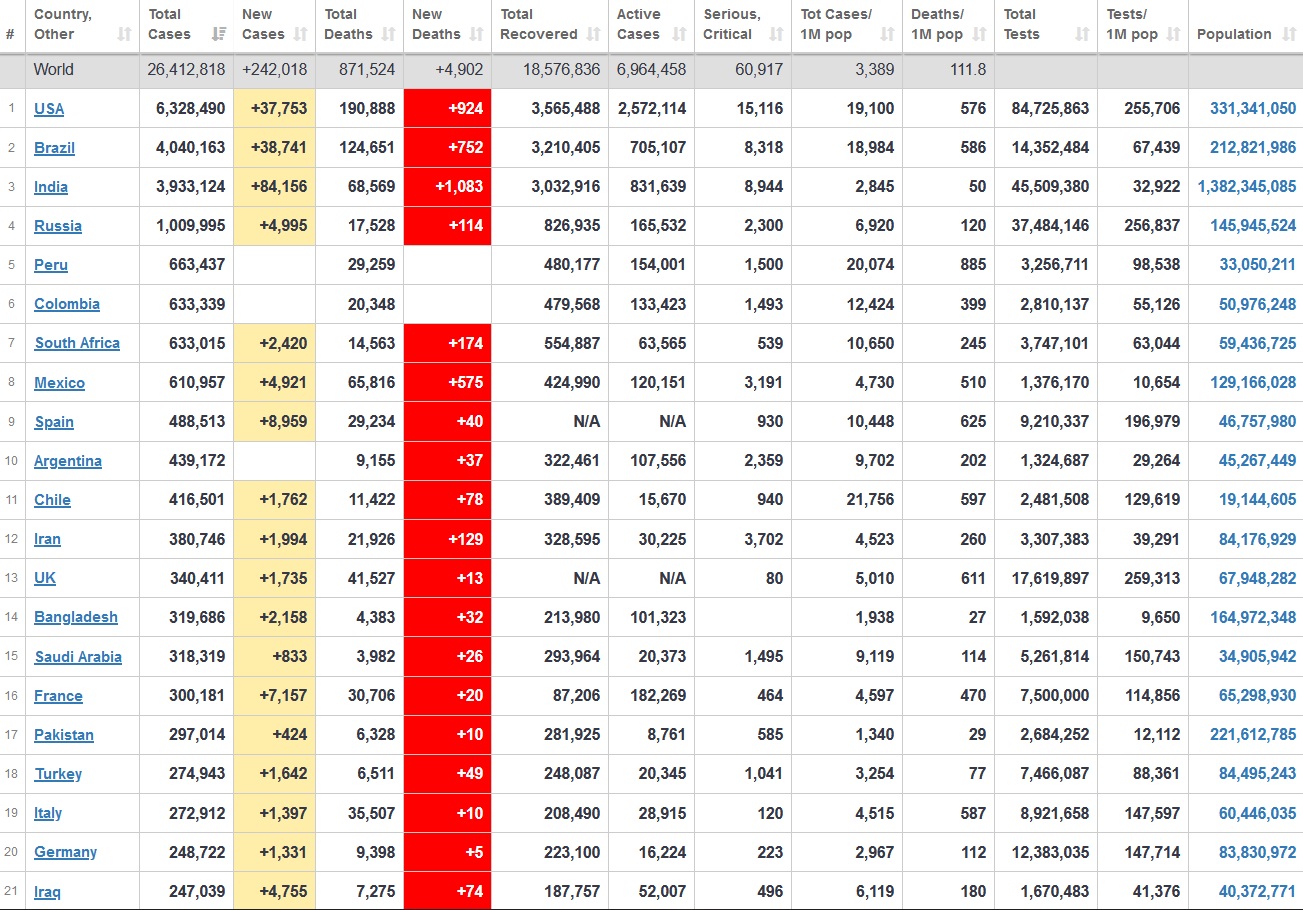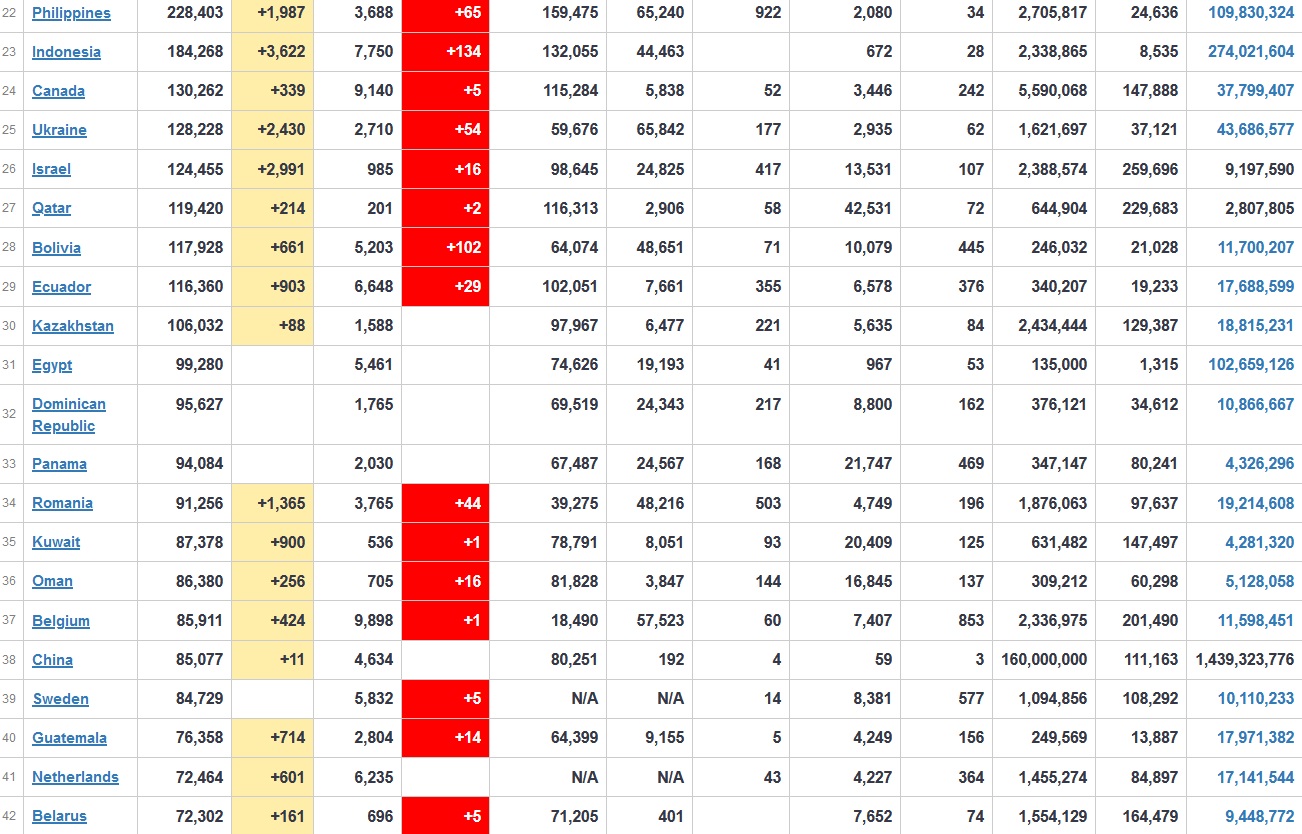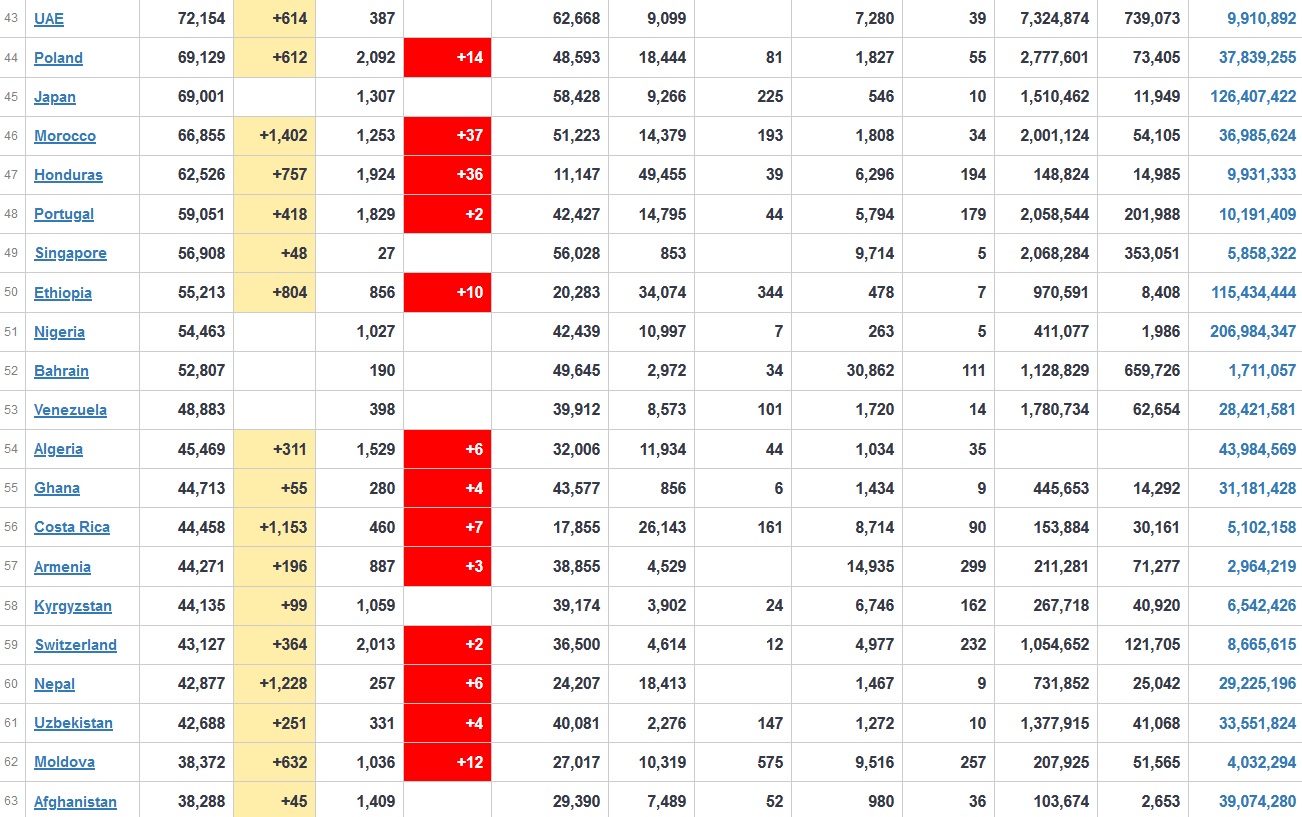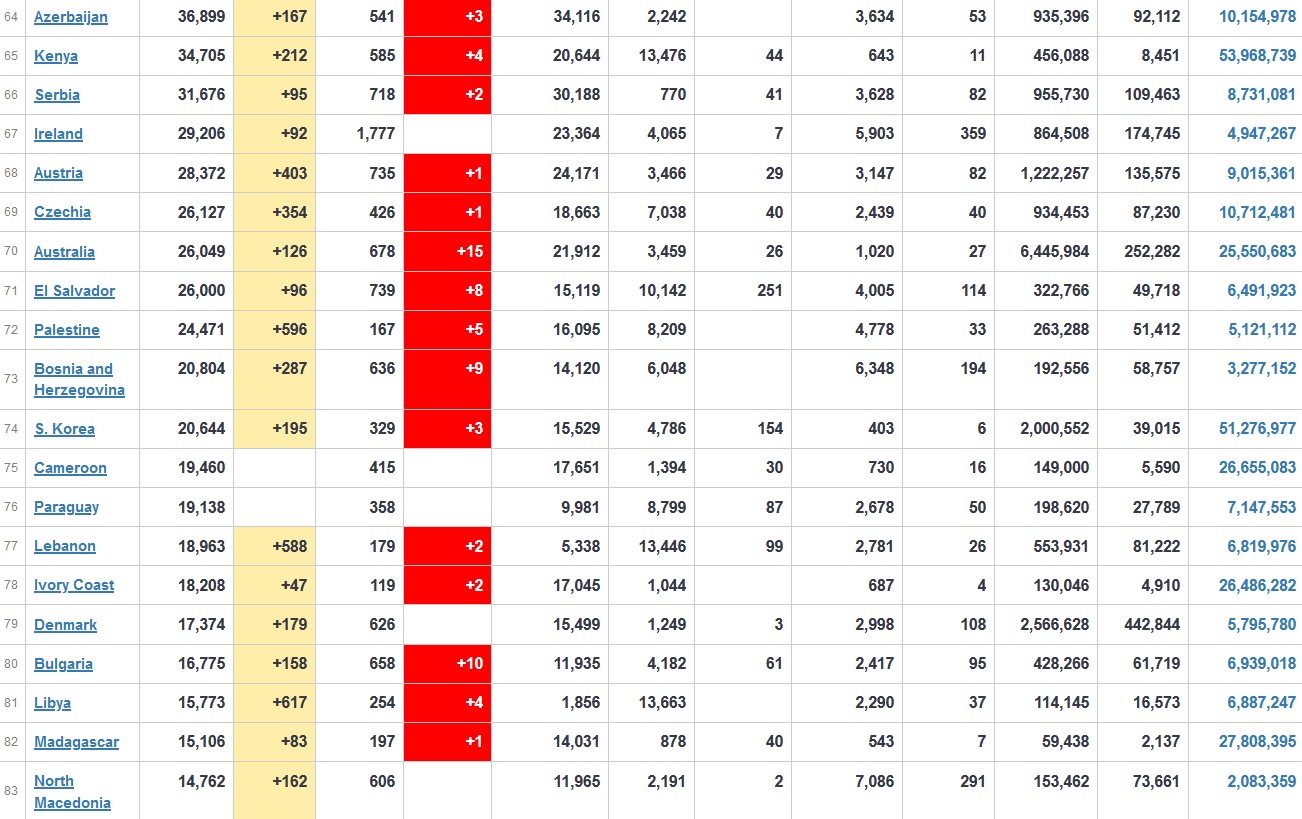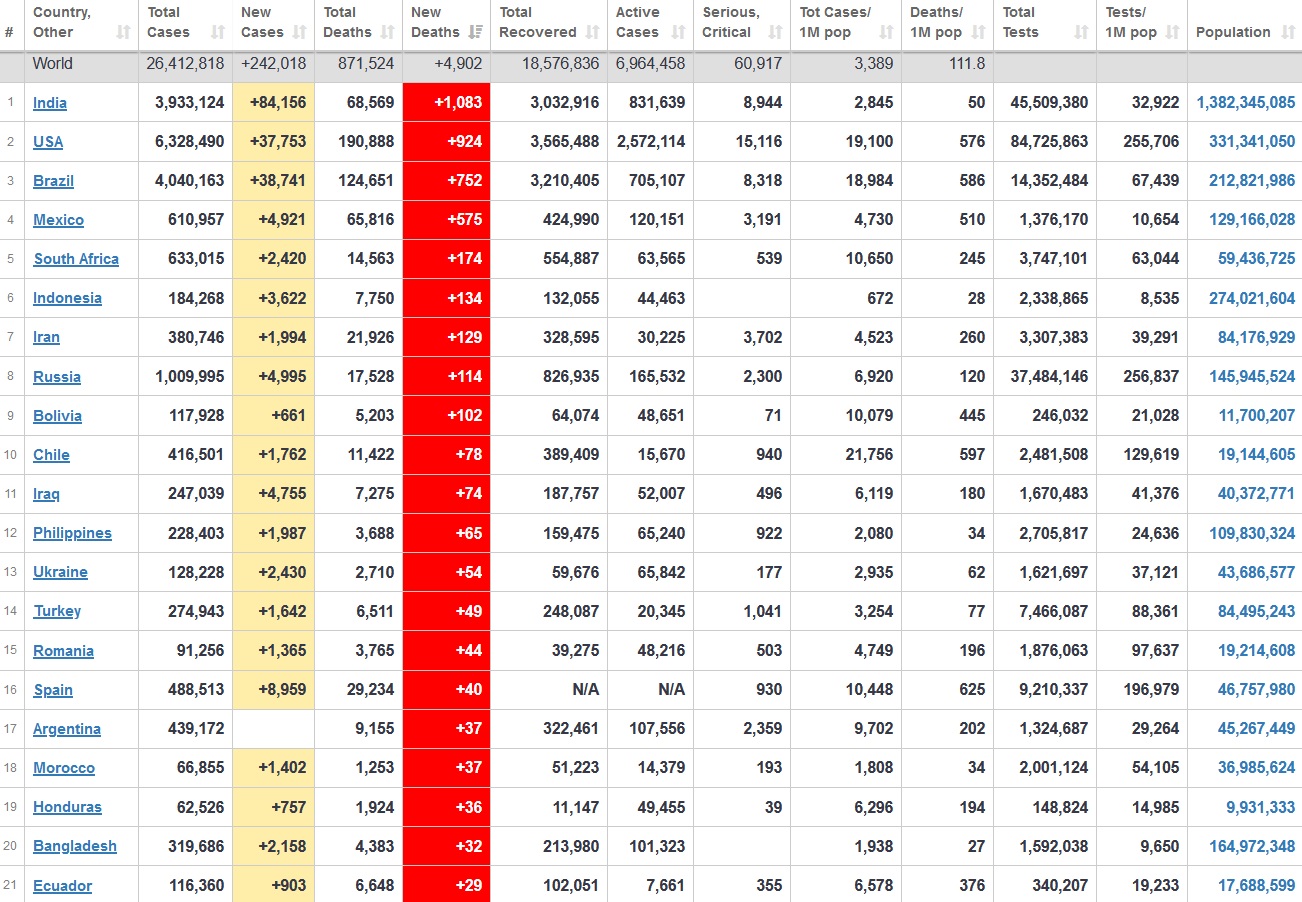It looks like you're using an Ad Blocker.
Please white-list or disable AboveTopSecret.com in your ad-blocking tool.
Thank you.
Some features of ATS will be disabled while you continue to use an ad-blocker.
share:
This graph says we have a more infectious, less deadly version of Covid going round France at the moment :
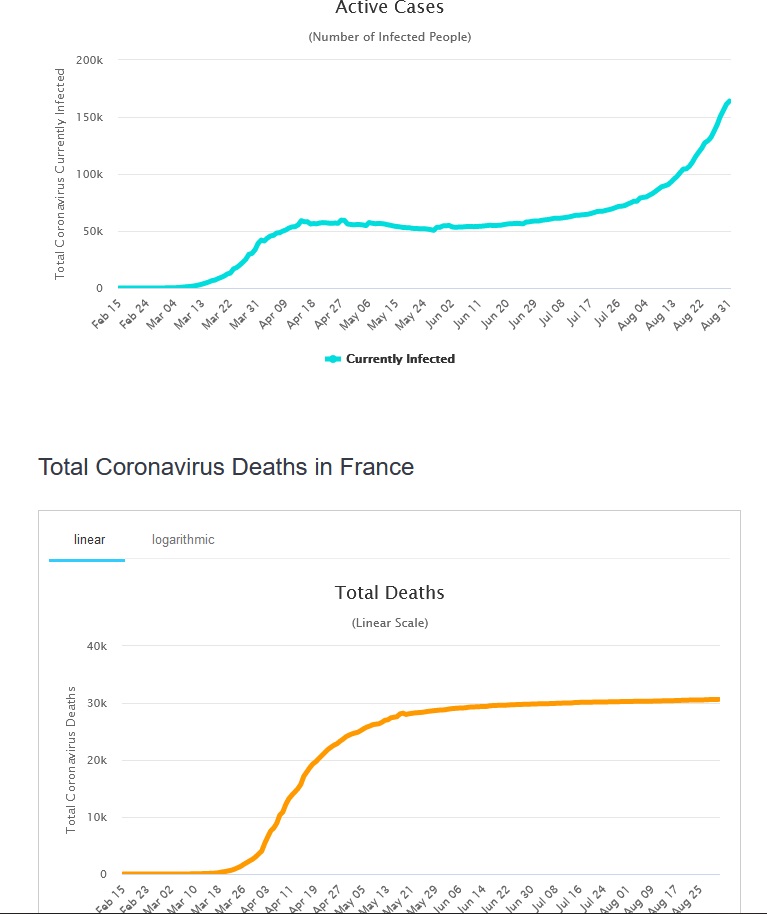
Time will tell (as always).

Time will tell (as always).
Just Humour or many a true word said in jest?
And the actual link to cdc page with the referenced 6% -
For 6% of the deaths, COVID-19 was the only cause mentioned. For deaths with conditions or causes in addition to COVID-19, on average, there were 2.6 additional conditions or causes per death.
And the actual link to cdc page with the referenced 6% -
For 6% of the deaths, COVID-19 was the only cause mentioned. For deaths with conditions or causes in addition to COVID-19, on average, there were 2.6 additional conditions or causes per death.
(Fell asleep again last night, doing it earlier tonight)
Numbers Update for Europe, and Elsewhere (No BNO) :
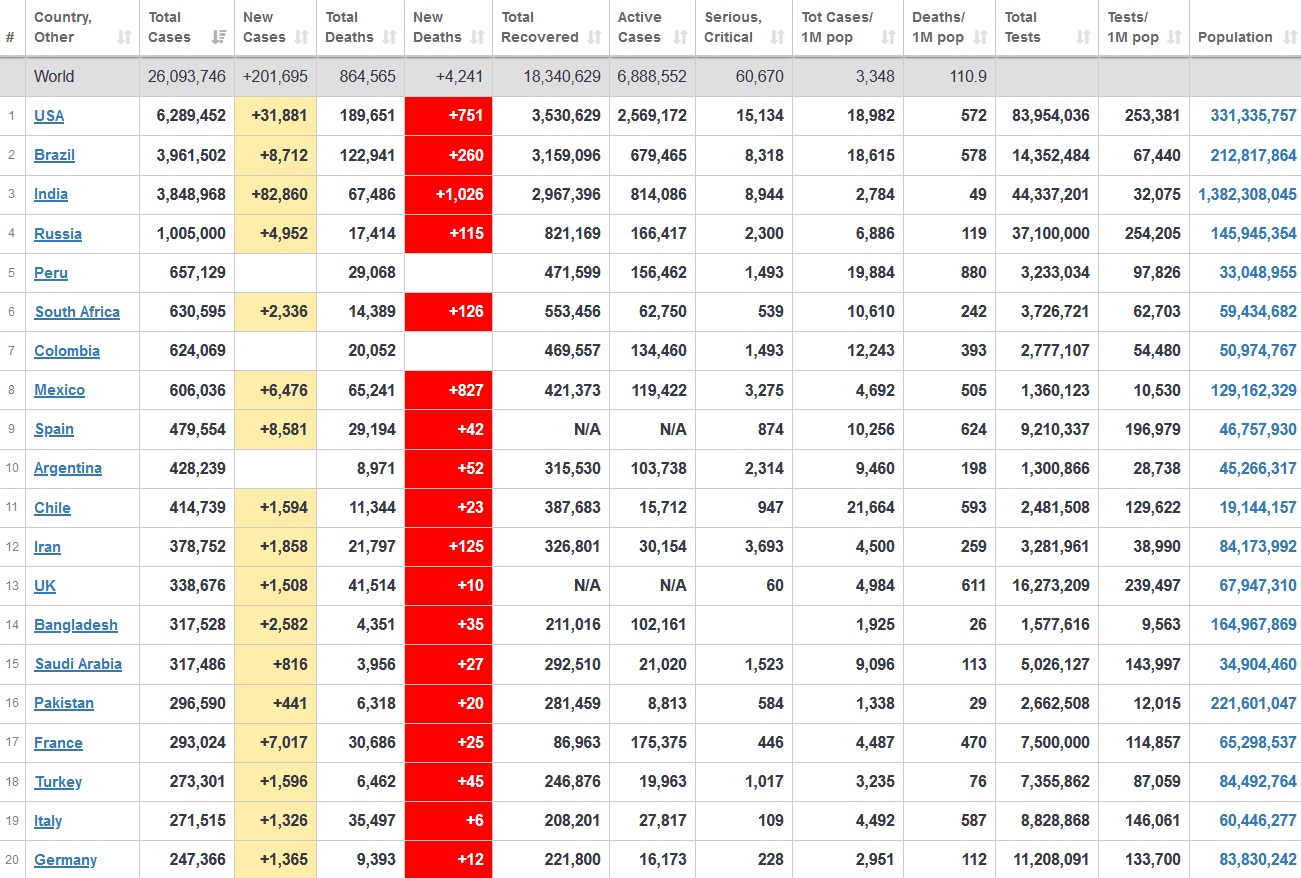
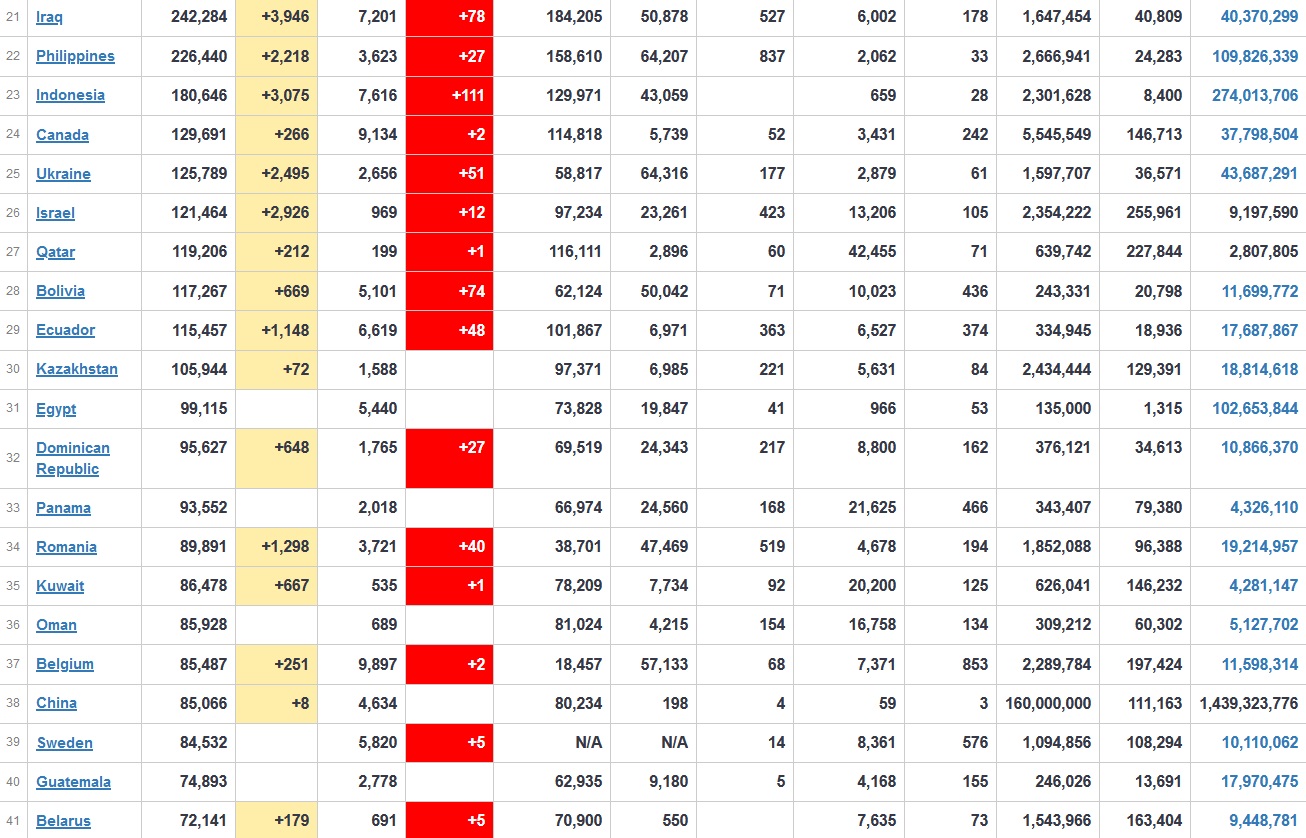
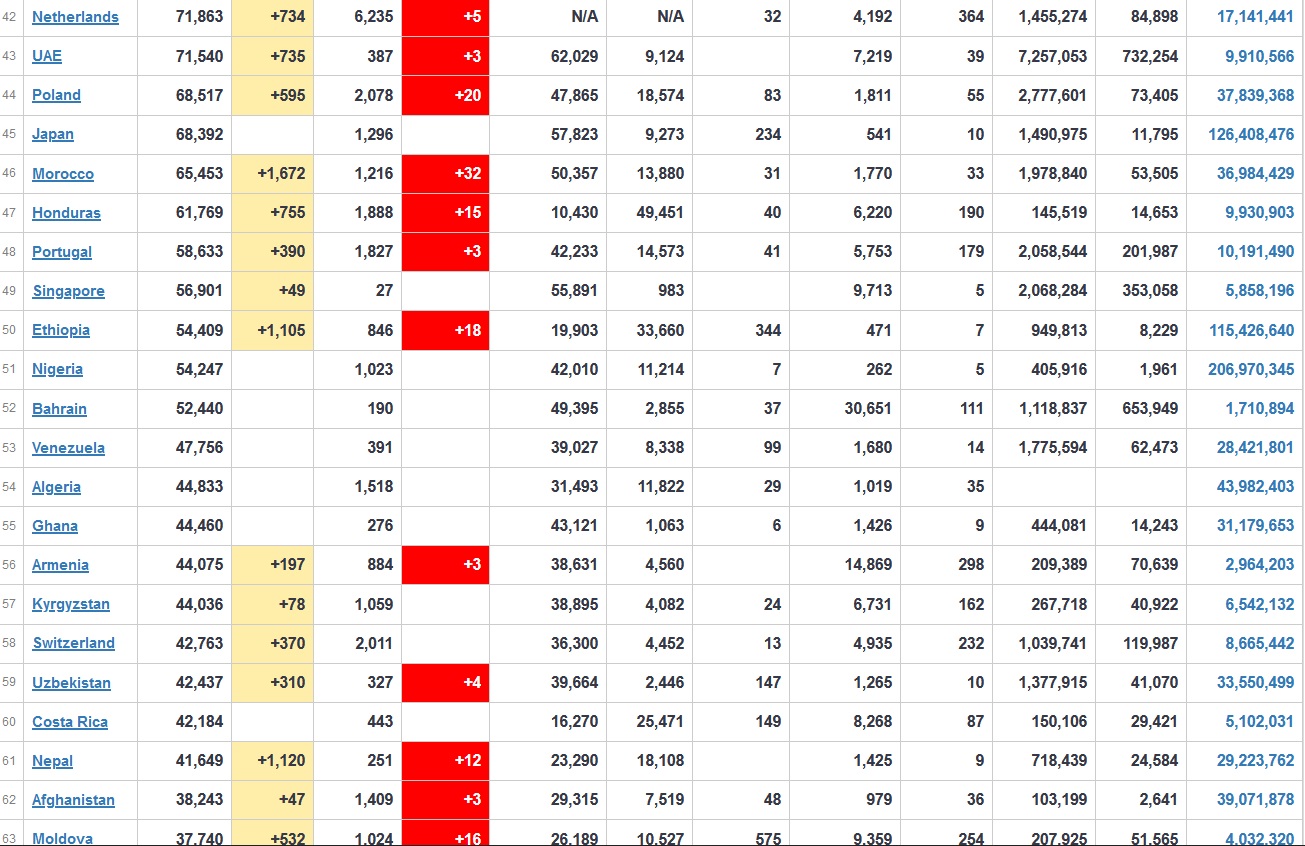

New Deaths :
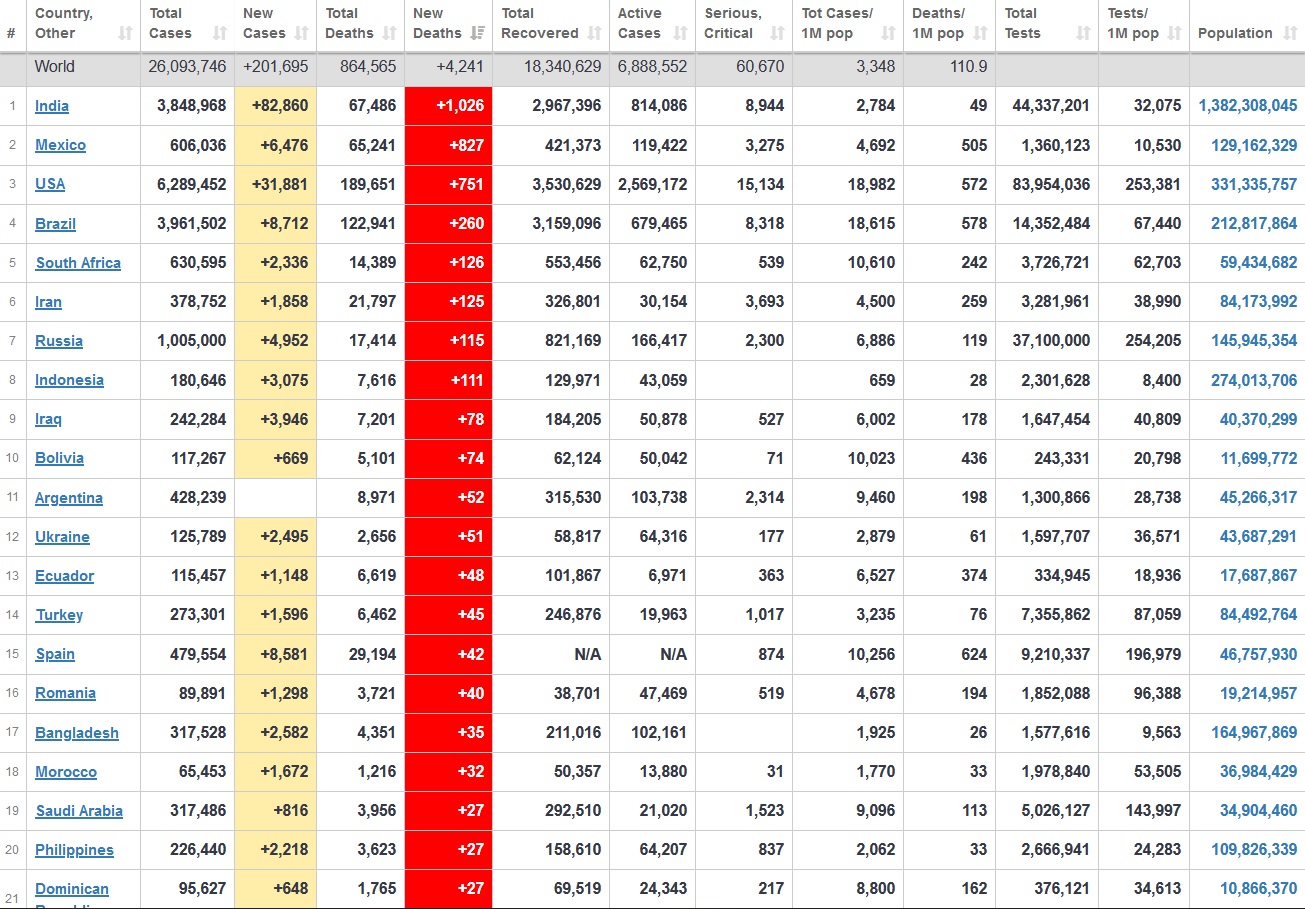
www.worldometers.info...
Numbers for France are back to 7K+ after the weekend 'blip' .
Lots of people have been getting tested since monday, and there is the same problem as in most places, enough tests, but not enough Labs to do the actual testing.
They are set to increase that though.
Numbers Update for Europe, and Elsewhere (No BNO) :




New Deaths :

www.worldometers.info...
Numbers for France are back to 7K+ after the weekend 'blip' .
Lots of people have been getting tested since monday, and there is the same problem as in most places, enough tests, but not enough Labs to do the actual testing.
They are set to increase that though.
edit on 2-9-2020 by MonkeyBalls2 because: added edit
So a study on a pre-print server Prunella vulgaris extract and suramin block
SARS-coronavirus 2 virus Spike protein D614 and G614 variants mediated receptor association and virus entry in cell culture system
Says
But according to wikipedia and Invasive Species Compendium it isn't a Chinese herb, it grows freely all over the world
In the study they reported just the herb in concentrated form from a dried source had a 65% inhibitory effect.
wikipedia says
and the ISC notes
Would this fall into a herbal remedy and therefore not profitable to pass on as information to the world's poorest people to start eating a nd drinking the tea?
Especially as there seems to be many other benefits than just reducing covid-19 viral uptake.
Fingers crossed I have some in the garden or local woodlands even the boreal forest up the road.
Says
we have demonstrated that an aqueous extract from the Chinese herb Prunella vulgaris (CHPV) and a compound, suramin, displayed potent inhibitory effects on both wild type and mutant (G614) SCoV-2 SP pseudotyped virus (SCoV-2-SP-PVs)-mediated infection
But according to wikipedia and Invasive Species Compendium it isn't a Chinese herb, it grows freely all over the world
Prunella vulgaris is a perennial herb native in Europe, Asia, Africa, and North America, and is common in most temperate climates
In the study they reported just the herb in concentrated form from a dried source had a 65% inhibitory effect.
wikipedia says
Prunella vulgaris is edible, and can be used in salads, soups, stews, and boiled as a pot herb.[citation needed] The Nlaka'pamux (first nation ) drank a cold infusion of the whole plant as a common beverage.[15]
and the ISC notes
Social Benefit
P. vulgaris has been used as a traditional medicinal herb in Europe and China for thousand of years (Li et al., 2012). The inflorescence spikes have been used to treat sore throat, fever and wounds and there is an increasing commercial demand for this plant due to its potential anti-inflammatory, antiviral and antibacterial activity (Li et al., 2012).
Its medicinal properties are due to the presence of constituents like triterpenoids, flavonoids, anionic polysaccharides-prullin, betulinic acid, d-camphor, oleanolic acid, uroslic acid and tannins (Kour et al., 2014).
For example, its triterpenoids show anti-allergic and anti-inflammatory effects, polysaccharide extracts show anti-microbial activity and reduce the expression of HSV-1 and HSV-2 antigens in hosts (Kour et al., 2014). Other investigations on triterpenoid extracts have been shown to inhibit glycogen phosphorylase and improve insulin sensitivity in adipocytes (Yu et al, 2014). Extracts from P. vulgaris exhibit anti-oestrogenic activity and inhibit the proliferation of endometrial cancer cell line-1 (Kour et al., 2014). Other medicinal properties include: anti-pyretic, anti-spasmodic, carminative, diuretic, vermifuge, antioxidant and dermatological photoprotectant (Kour et al., 2014).
Would this fall into a herbal remedy and therefore not profitable to pass on as information to the world's poorest people to start eating a nd drinking the tea?
Especially as there seems to be many other benefits than just reducing covid-19 viral uptake.
Fingers crossed I have some in the garden or local woodlands even the boreal forest up the road.
A little quickie :
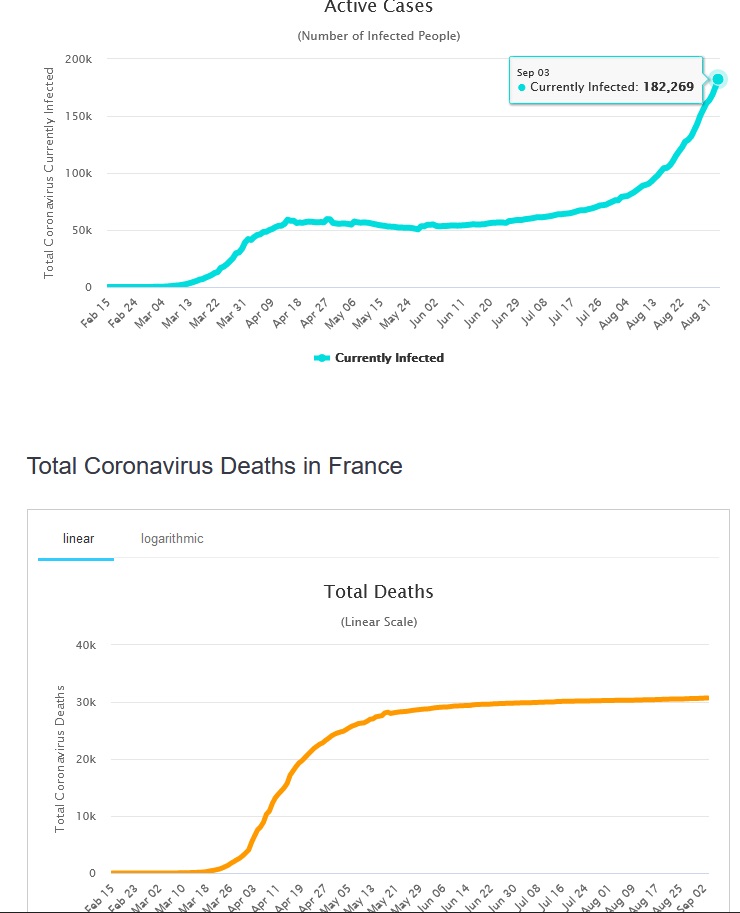
I heard on the radio this morning that the numbers of people going into ICU has been increasing the last three days, not including today, and that yesterdays ICU increase was +55.
Thats Nationally, if I heard correctly.
I had heard that the number of people going into ICU was increasing for a couple of weeks at least, but it has now passed the number of people recovering.
So Infected numbers have been going up since well more than two weeks, but now is when the ICU numbers may be increasing more.
Have no info on Age/Race/anything to differentiate.
Just relaying what I hear here and there.
Keeping ears and eyes open.

I heard on the radio this morning that the numbers of people going into ICU has been increasing the last three days, not including today, and that yesterdays ICU increase was +55.
Thats Nationally, if I heard correctly.
I had heard that the number of people going into ICU was increasing for a couple of weeks at least, but it has now passed the number of people recovering.
So Infected numbers have been going up since well more than two weeks, but now is when the ICU numbers may be increasing more.
Have no info on Age/Race/anything to differentiate.
Just relaying what I hear here and there.
Keeping ears and eyes open.
edit on 4-9-2020 by MonkeyBalls2 because: (no reason given)
Also, last I heard, South Korea, Turkey, and Japan, have an ICU bed availability problem.
Numbers Update for Europe, and Elsewhere (No BNO) :
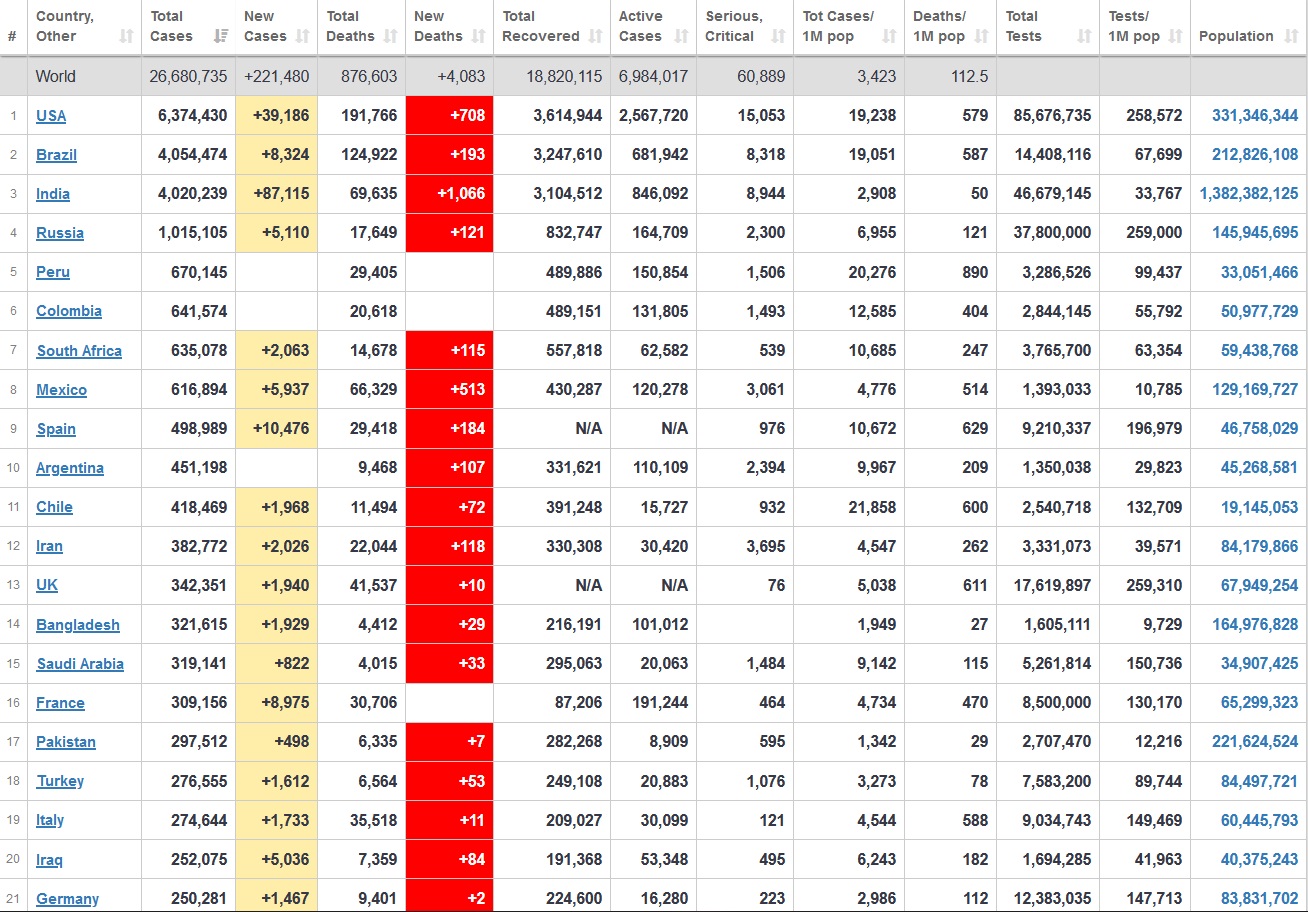
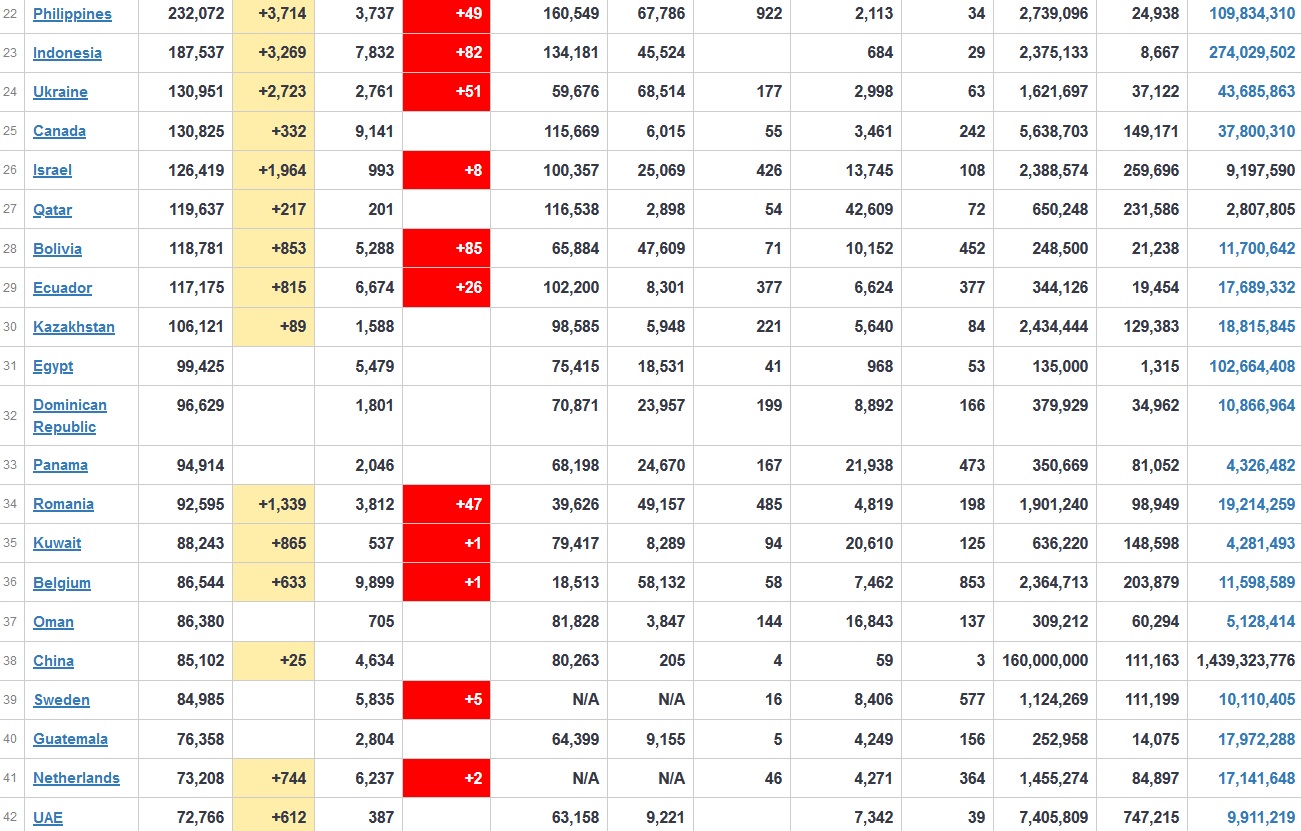
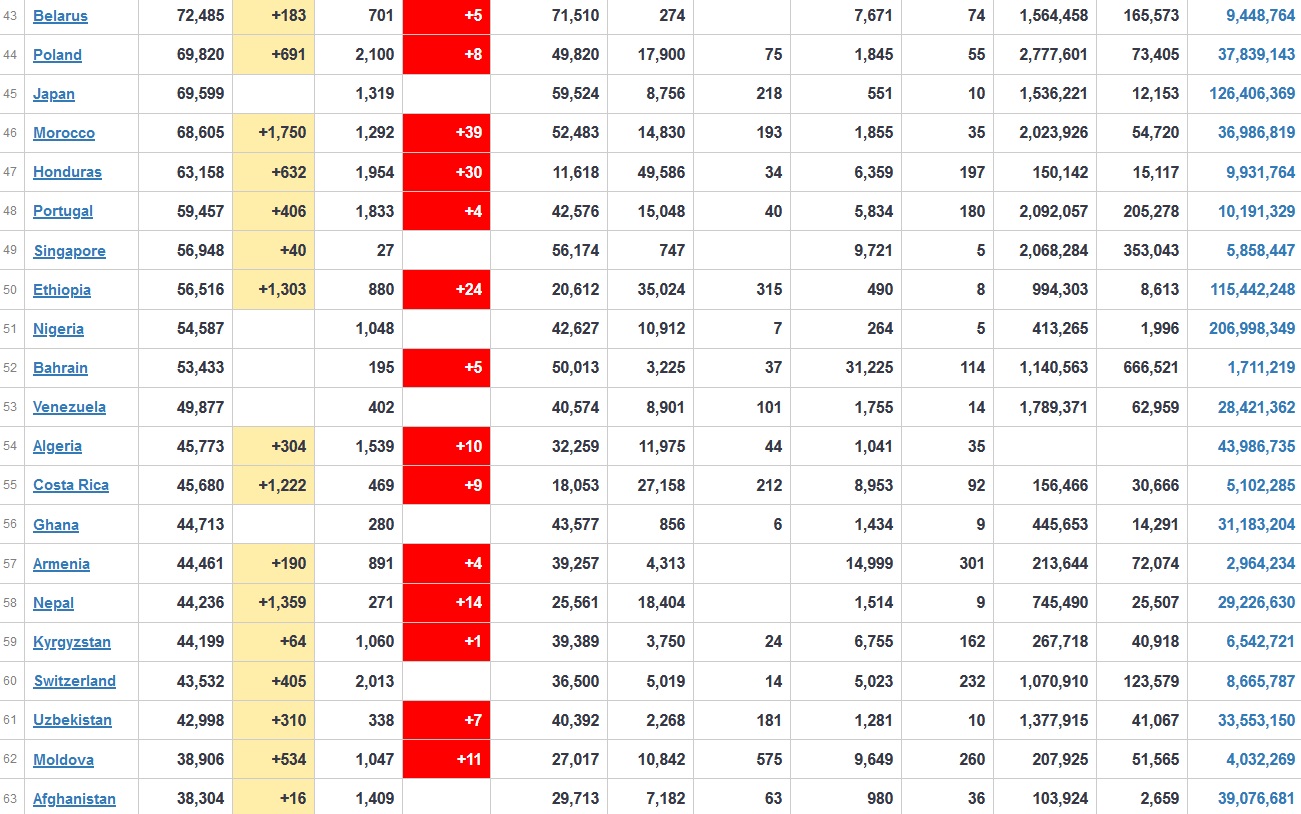
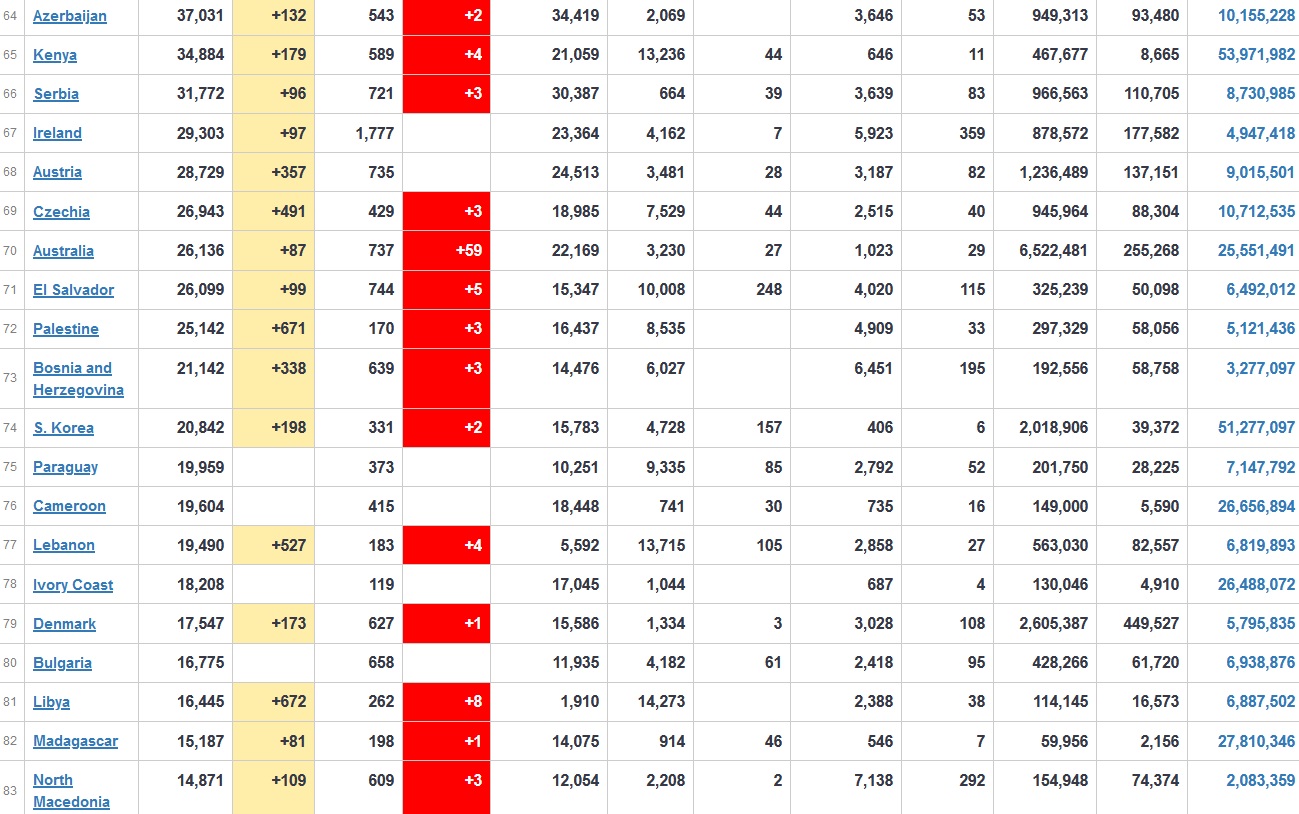
New Deaths :
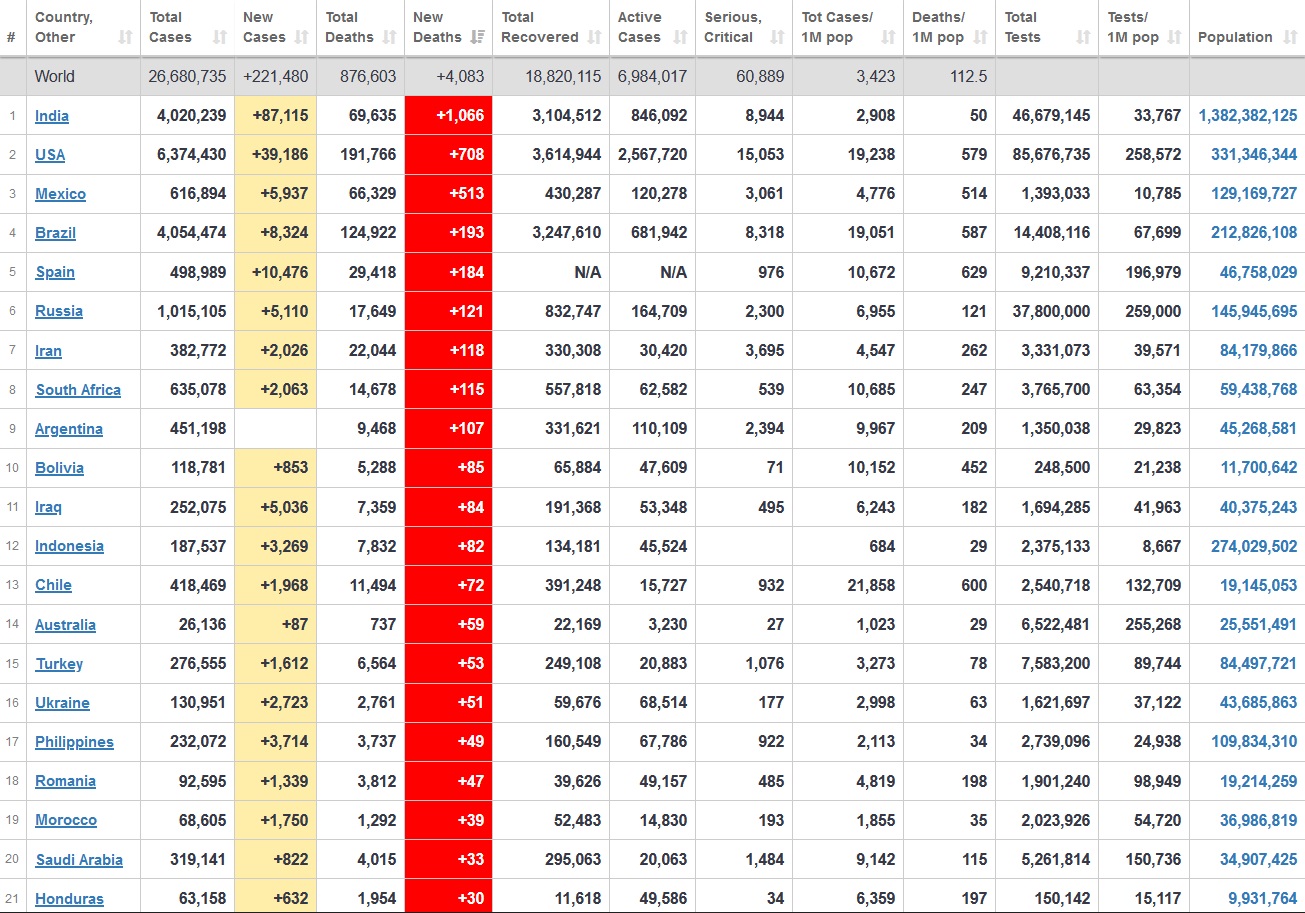
New Cases :
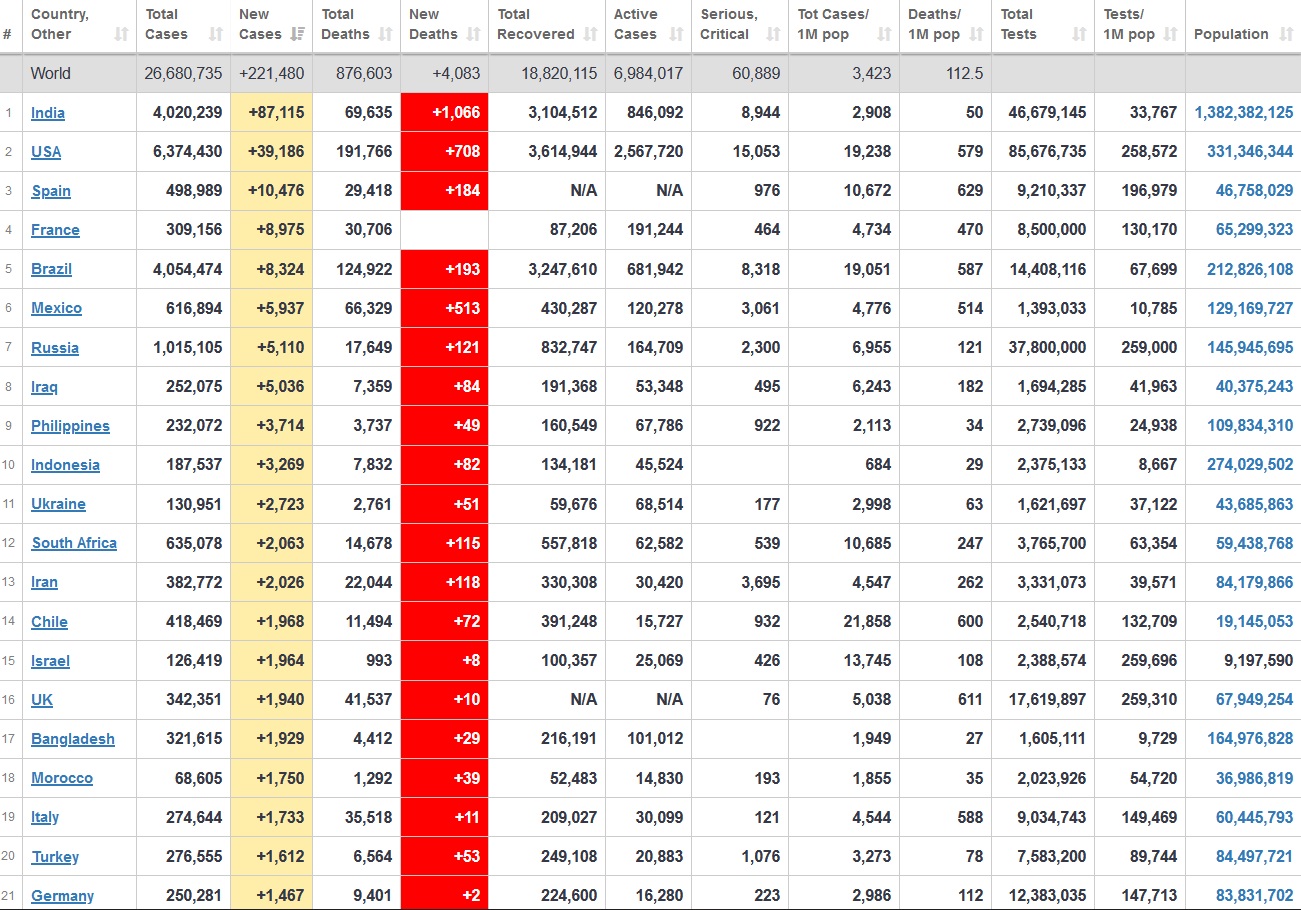
www.worldometers.info...




New Deaths :

New Cases :

www.worldometers.info...
originally posted by: puzzled2
Just Humour or many a true word said in jest?
And the actual link to cdc page with the referenced 6% -
For 6% of the deaths, COVID-19 was the only cause mentioned. For deaths with conditions or causes in addition to COVID-19, on average, there were 2.6 additional conditions or causes per death.
There's a few things wrong with this. First, it's not new data. It's been on the CDC website for months. Second, we knew all along that people with comorbidities had a worse outcomes. Third, many of the death certificates with multiple causes of death listed "heart failure" or "respiratory failure", things caused by covid19 but not part of the 6% number. Forth, it could easily be argued that 6% of the death certificates were incomplete, because covid19 doesn't kill anyone, complications from covid19 do. Fifth, half of Americans have at least one comorbidity, being overweight or high blood pressure, or whatever. Sixth, anyone using that 6% number to push an agenda needs to be considered a bad source of information going forward.
Add in there that in light of claims that perfectly healthy people don't die from this virus, these statistics debunk that claim. Perfectly healthy people do die from covid. It's a classic case of moving the bar.
edit on 5-9-2020 by asdfas because: (no reason given)
a reply to: asdfas
How do you know who is perfectly healthy?
for instance google.
1 in 5 People Unknowingly Have Fatty Liver Disease,
About 86 million people in the U.S. over age 20 have prediabetes
As of 2018, 30.3 million U.S. adults were diagnosed with heart disease.
Every year, about 647,000 Americans die from heart disease, making it the leading cause of death in the United States. Heart disease causes 1 out of every 4 deaths.
and Those of us who are deficient in the vitamin D weaking our immune system — an oft-cited study puts the number at over 40 percent of the U.S. population.
You assume an a lot of pre-existing knowledge about who is healthy.
says the 6% are incomplete death certificates.
The problem with stats are they can be manipulated.
The problem with a virus is how our bodies react to it's presence. No problem mild over-reaction massive over reaction.
Pretty much like a peaceful protest, can pass by without a problem, until something reacts, then all hell breaks loose and the fever (fires) happens and the all out chaos destroying random parts in the body.
As for the CDC report I was more interested in the 1,000's of people who died with injuries and covid-19.
Did the injury, gunshot to the head or the covid-19 replicating in the nasal passage cause the death?
How do you know who is perfectly healthy?
for instance google.
1 in 5 People Unknowingly Have Fatty Liver Disease,
About 86 million people in the U.S. over age 20 have prediabetes
As of 2018, 30.3 million U.S. adults were diagnosed with heart disease.
Every year, about 647,000 Americans die from heart disease, making it the leading cause of death in the United States. Heart disease causes 1 out of every 4 deaths.
and Those of us who are deficient in the vitamin D weaking our immune system — an oft-cited study puts the number at over 40 percent of the U.S. population.
You assume an a lot of pre-existing knowledge about who is healthy.
says the 6% are incomplete death certificates.
The problem with stats are they can be manipulated.
The problem with a virus is how our bodies react to it's presence. No problem mild over-reaction massive over reaction.
Pretty much like a peaceful protest, can pass by without a problem, until something reacts, then all hell breaks loose and the fever (fires) happens and the all out chaos destroying random parts in the body.
As for the CDC report I was more interested in the 1,000's of people who died with injuries and covid-19.
Did the injury, gunshot to the head or the covid-19 replicating in the nasal passage cause the death?
It just gets more and more ridiculous now here in the UK. The government is considering (i.e - will most likely) bringing an unlicensed Covid vaccine
to market - bypassing the usual licensing standards. They claim that doesn't mean it isn't tested but surely it means it is not tested as much - it
will have not gone through the rigorous testing and retesting and so on which other vaccines have had. This seems hugely dangerous and for a virus
that let's face it - is overblown and definitely not as dangerous as it has been made out to be.
Another element that is particularly dark is this:
So if this vaccine ends up being harmful to people, they have no way of taking legal action? Or at least against the manufacturer? Would you be able to sue the government? This whole thing just seems ridiculous at this point. I hope most people on here wouldn't take an unlicensed vaccine for this virus.
www.gov.uk... regulations-to-support-the-rollout-of-covid-19-vaccines?fbclid=IwAR3KLXSG4ODmyAS5uEPHHd7ACJKOln5Nd-Wxo_vWuD04sK8qooR-f3s1OV4#civil-liability-and-immun ity
Another element that is particularly dark is this:
Regulation 345 of the Human Medicine Regulations transposes into UK law a requirement of EU law that key actors in the medicines supply chain cannot generally be sued in the civil courts for the consequences resulting from the use of an unlicensed product, or a new use of a licensed product, that a national licensing authority is recommending in order to deal with certain specific health threats.
So if this vaccine ends up being harmful to people, they have no way of taking legal action? Or at least against the manufacturer? Would you be able to sue the government? This whole thing just seems ridiculous at this point. I hope most people on here wouldn't take an unlicensed vaccine for this virus.
www.gov.uk... regulations-to-support-the-rollout-of-covid-19-vaccines?fbclid=IwAR3KLXSG4ODmyAS5uEPHHd7ACJKOln5Nd-Wxo_vWuD04sK8qooR-f3s1OV4#civil-liability-and-immun ity
a reply to: cirrus12
Almost ALL of the Vaccine creators (for COVID) have signed agreements that they will NOT be held responsible for side effects or ANY litigation incurring from the use of said vaccines*.
I'm fully for the use of Vaccines, but not until this one has been tested on a lot of people before me.
edit : *Mainly due to the demand of a severely shortened timeline by the requestors (Gov'ts).
Almost ALL of the Vaccine creators (for COVID) have signed agreements that they will NOT be held responsible for side effects or ANY litigation incurring from the use of said vaccines*.
I'm fully for the use of Vaccines, but not until this one has been tested on a lot of people before me.
edit : *Mainly due to the demand of a severely shortened timeline by the requestors (Gov'ts).
edit on 5-9-2020 by MonkeyBalls2 because: added stuff
Numbers Update for Europe, and Elsewhere (No BNO) :
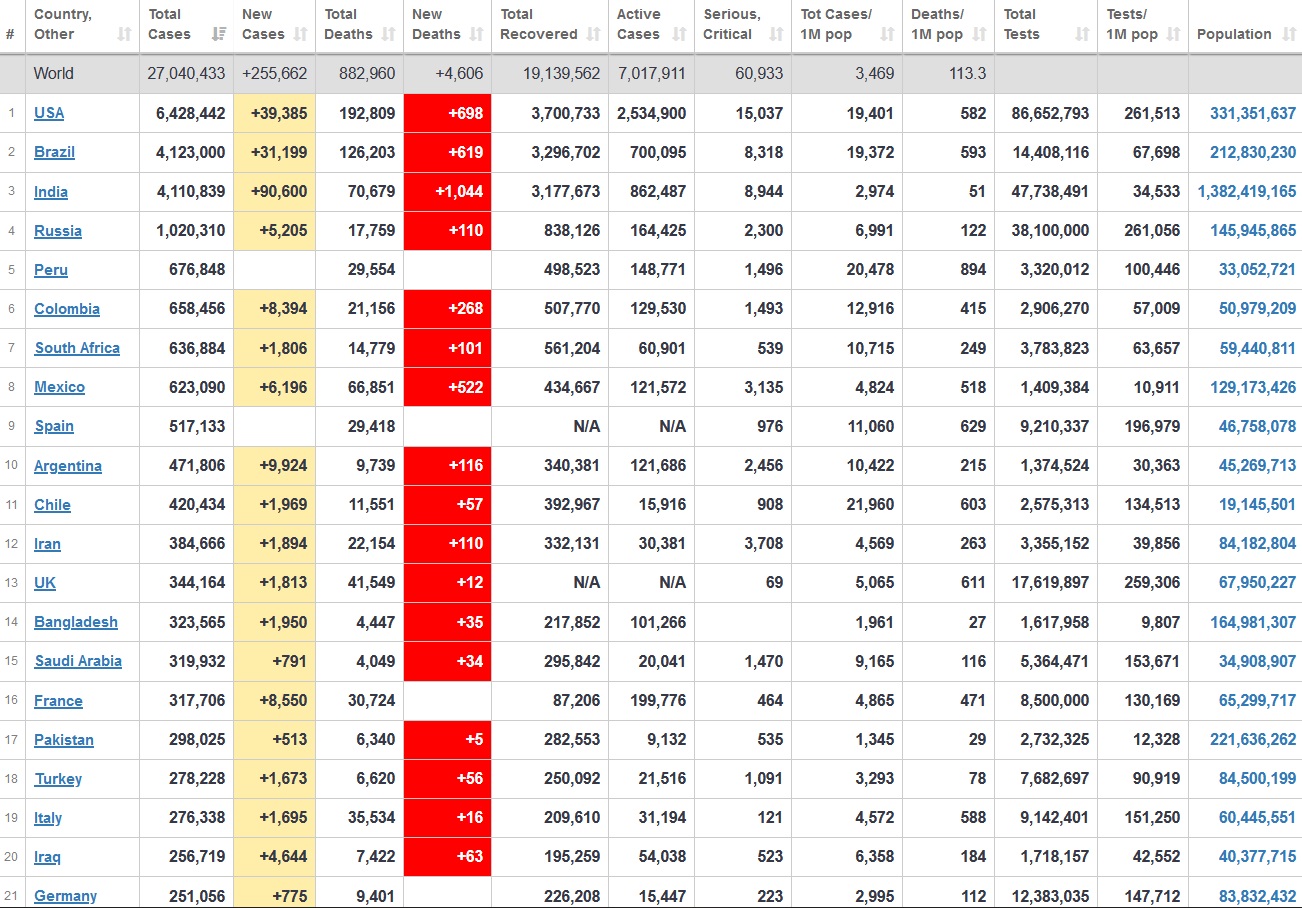
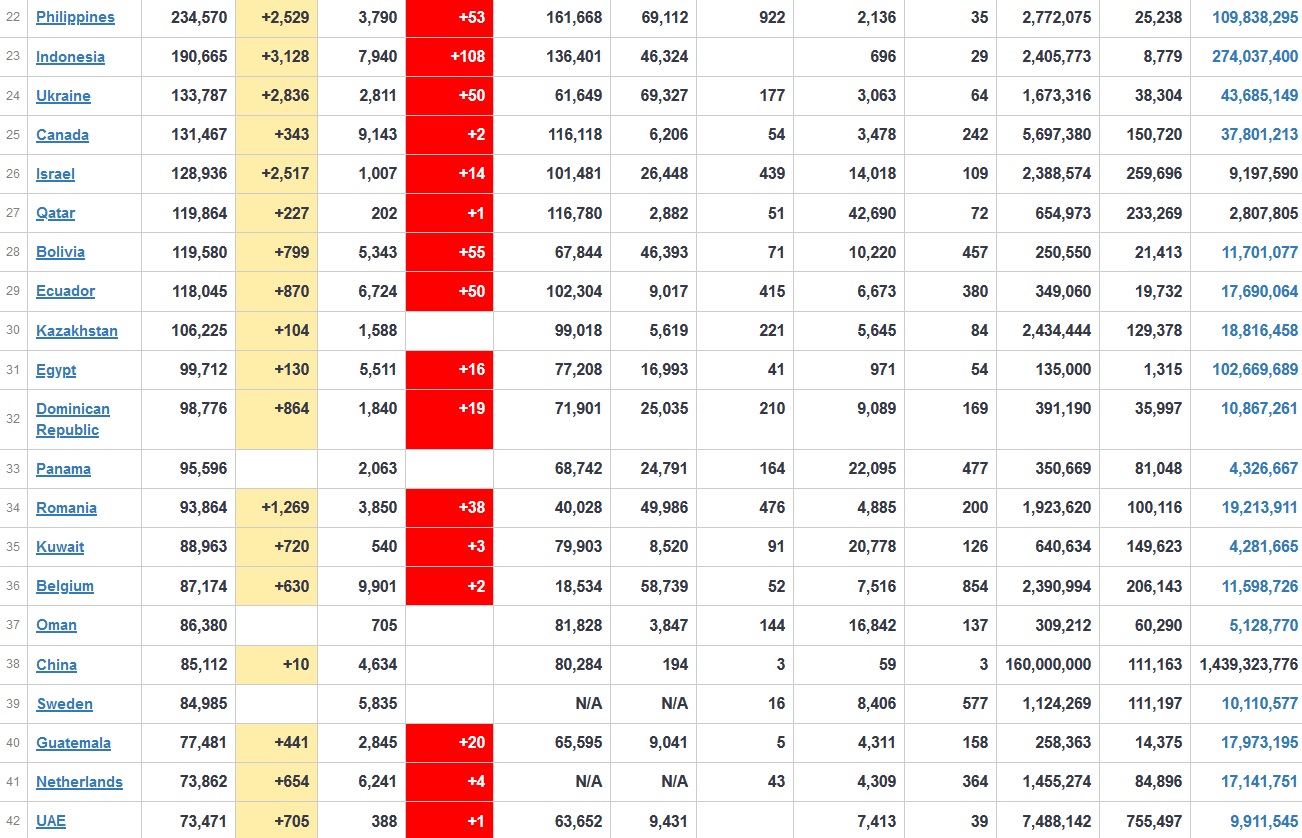
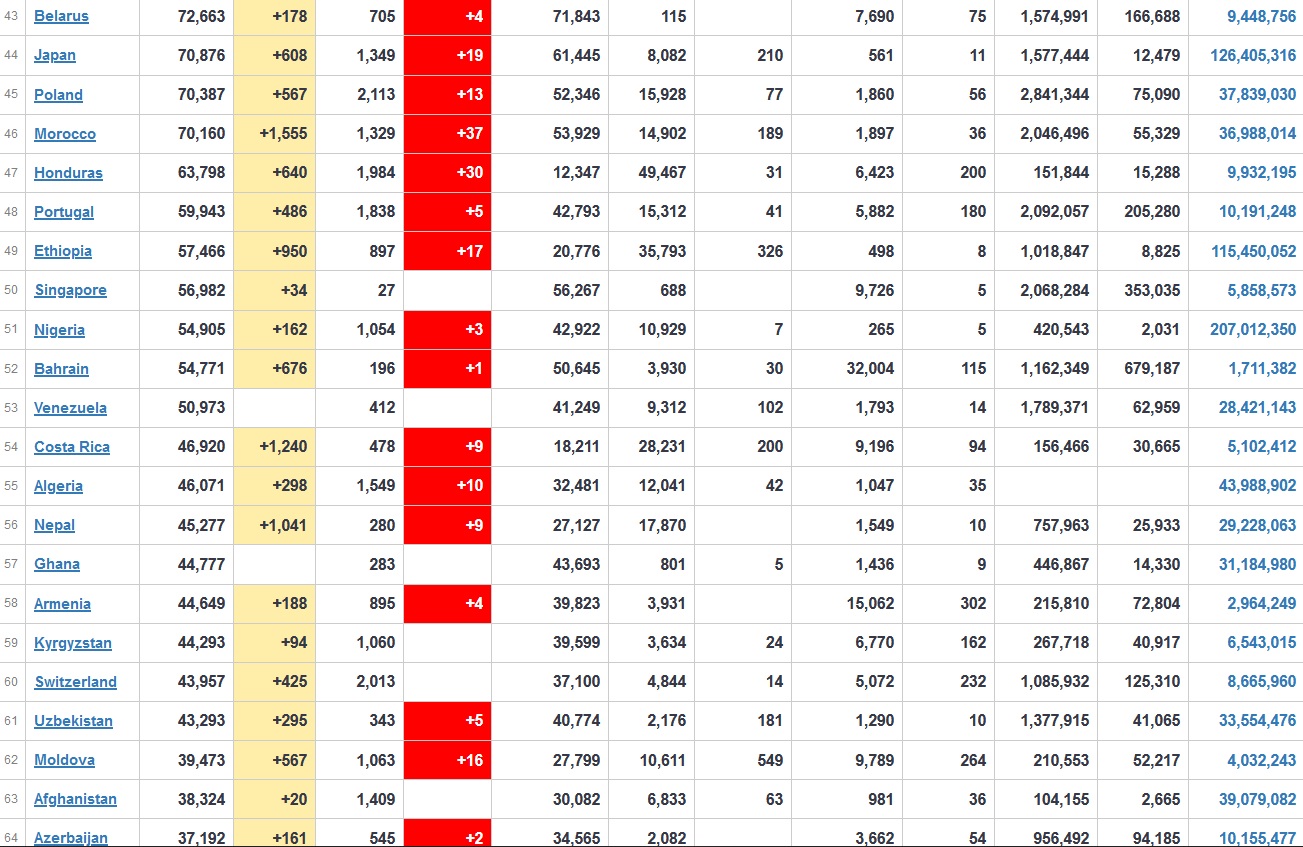
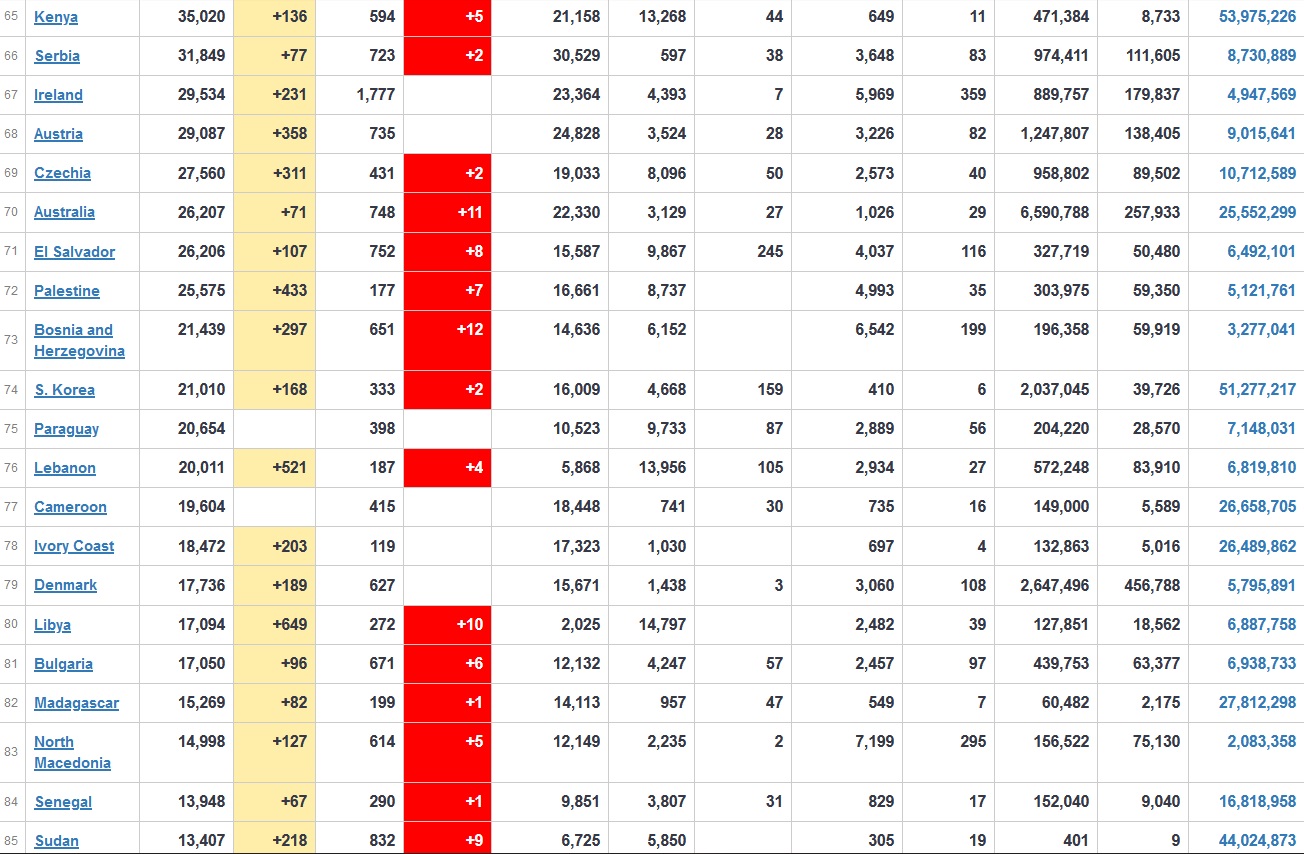
New Deaths :
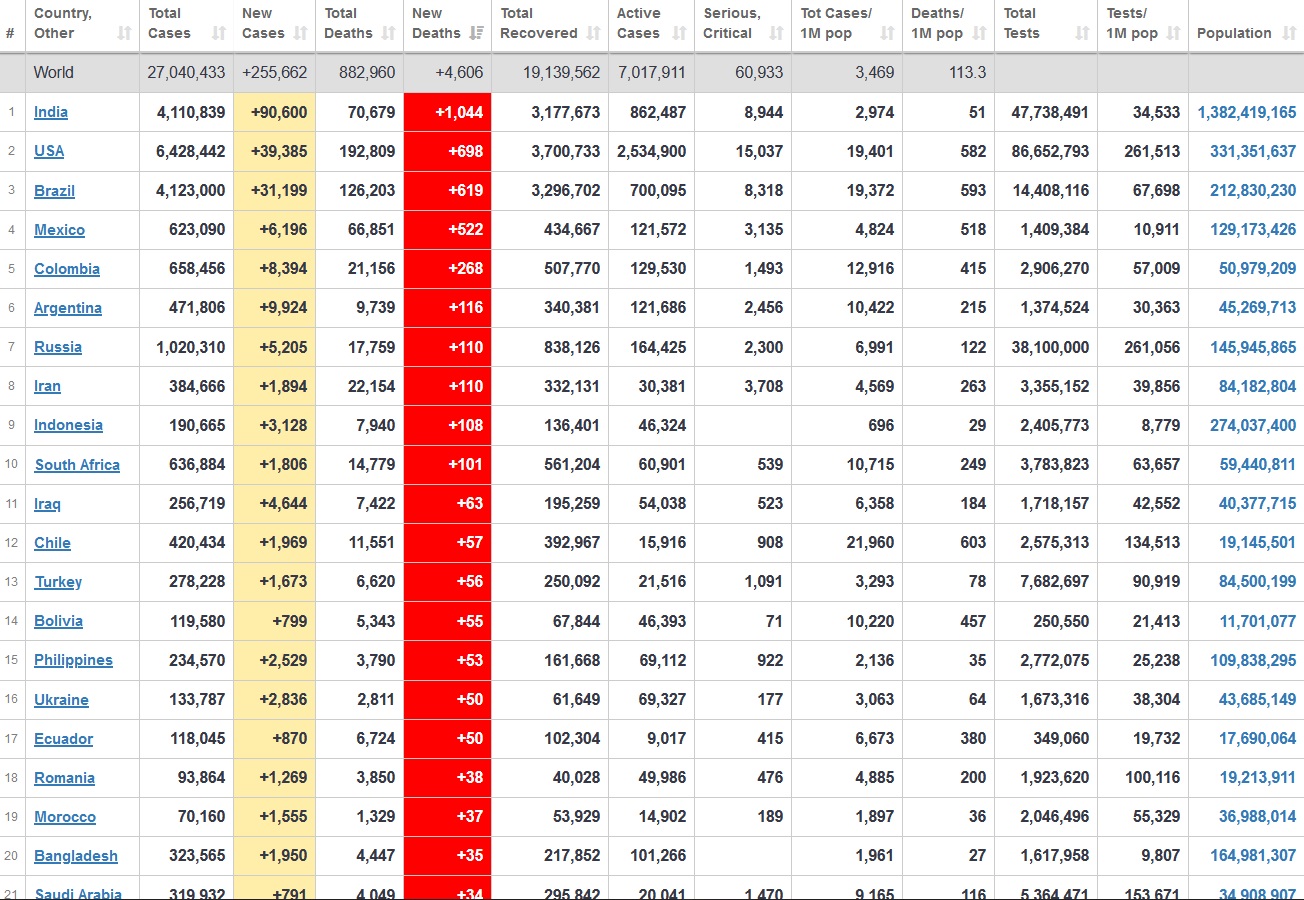
New Cases :
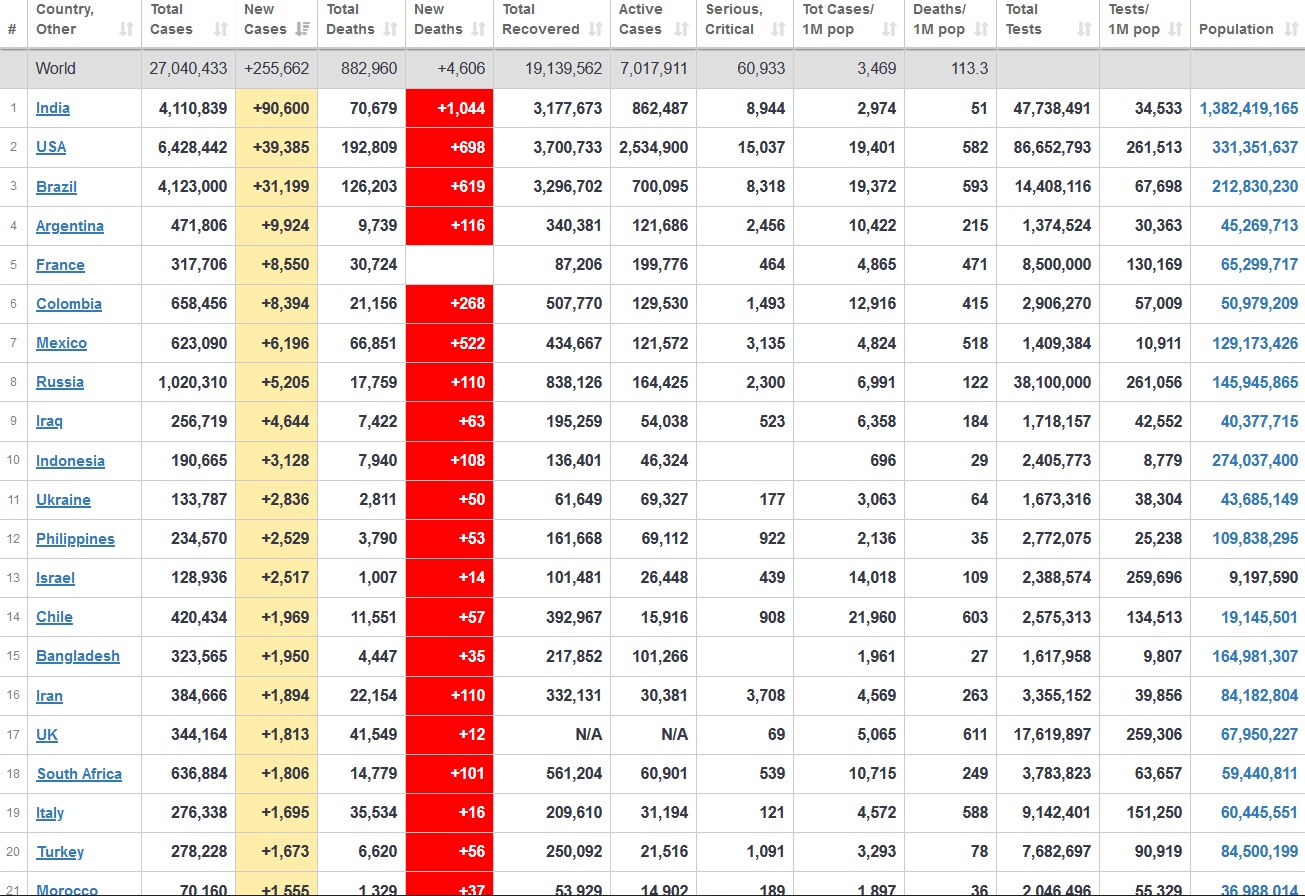
www.worldometers.info...




New Deaths :

New Cases :

www.worldometers.info...
Numbers Update for Europe, and Elsewhere (No BNO) :
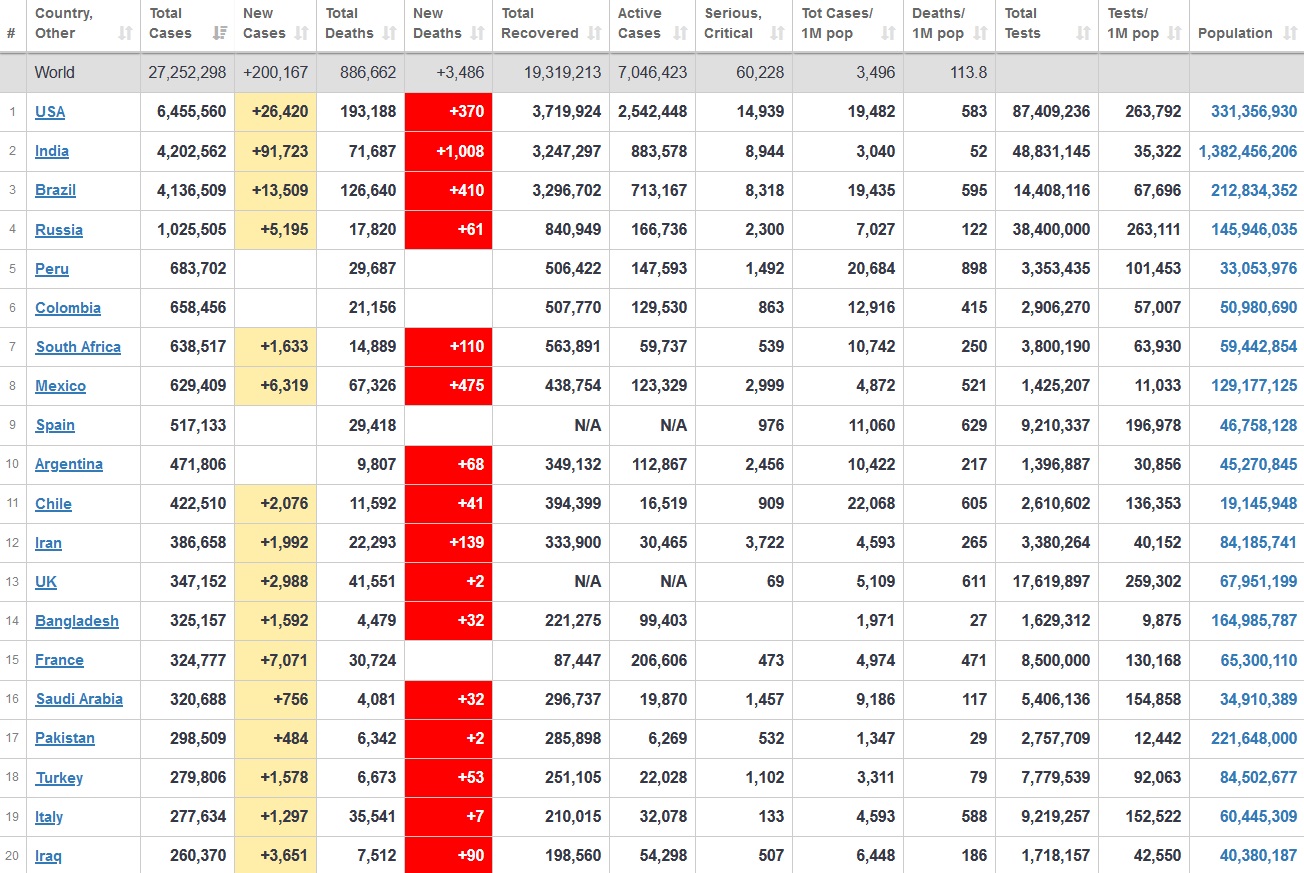
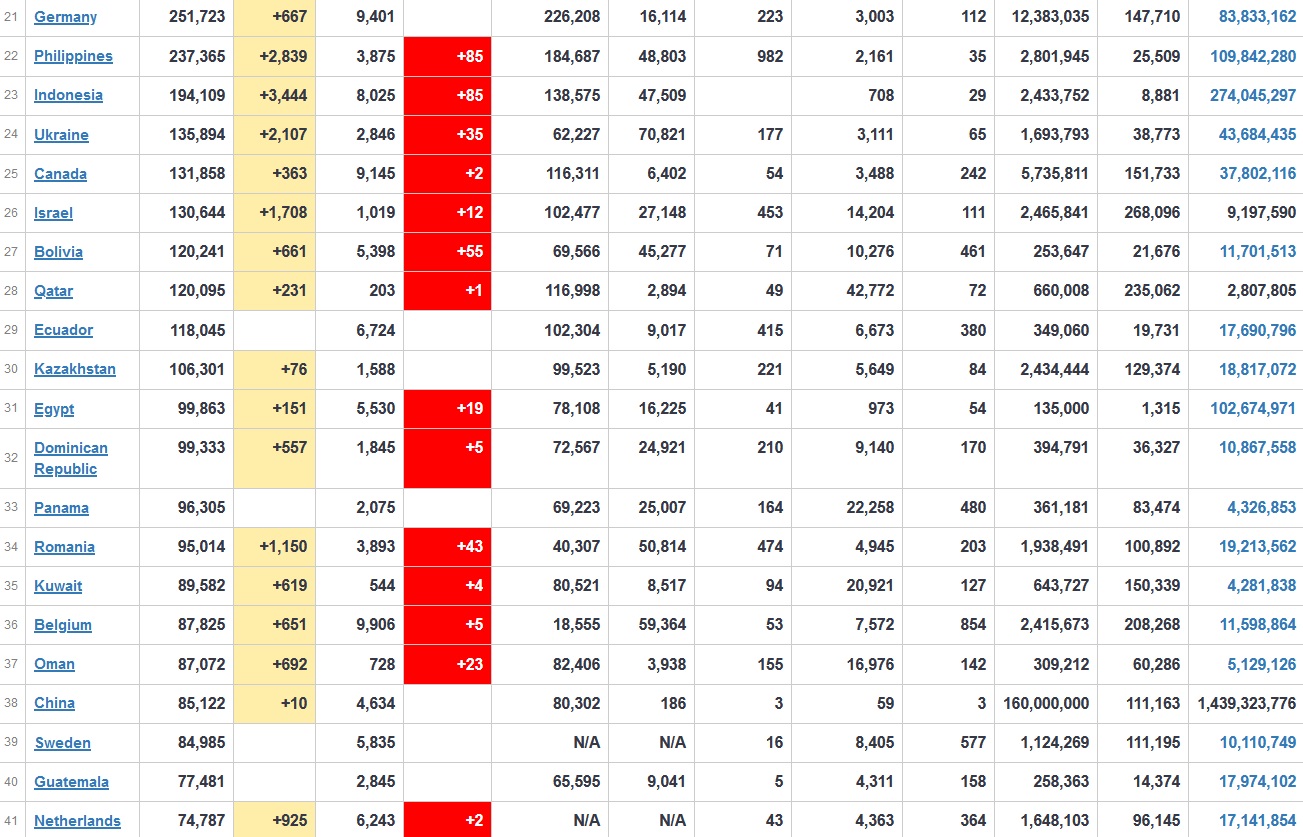
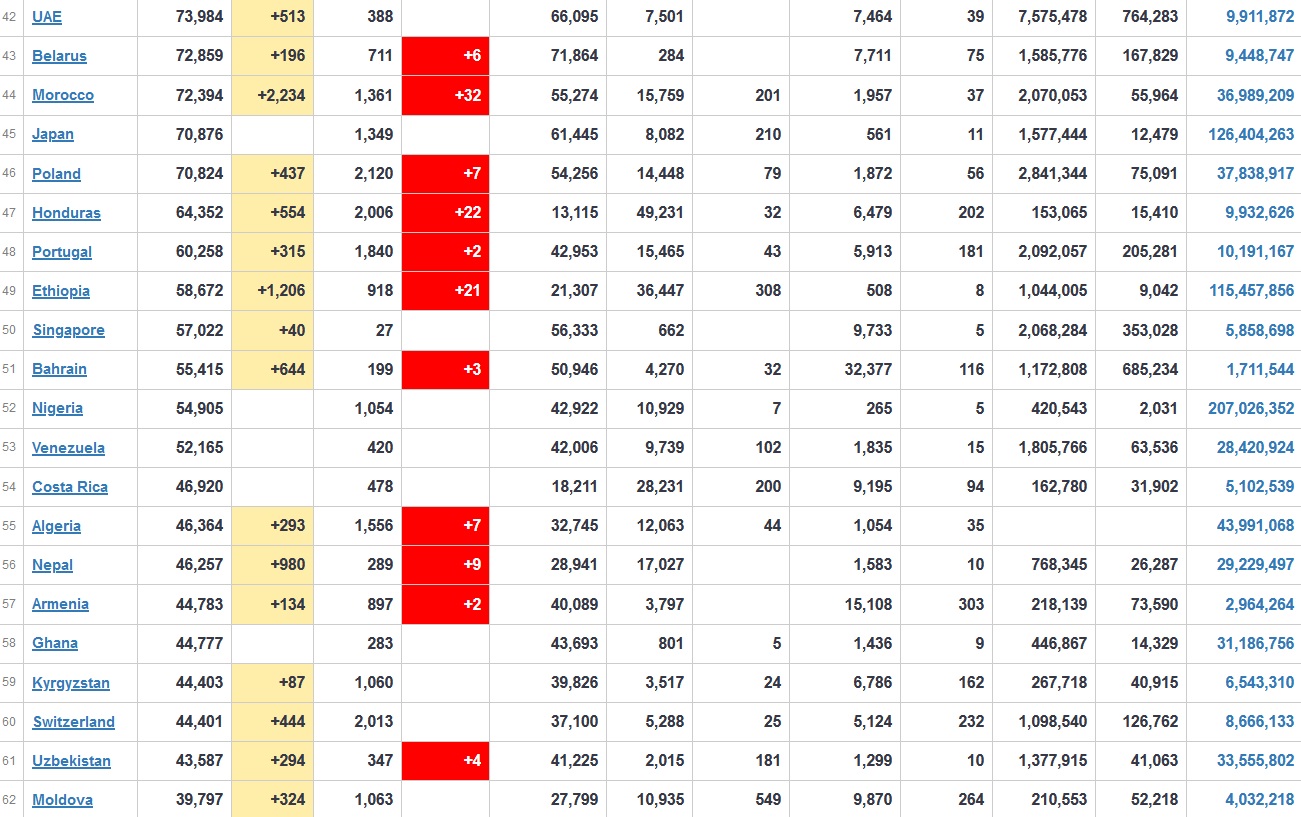
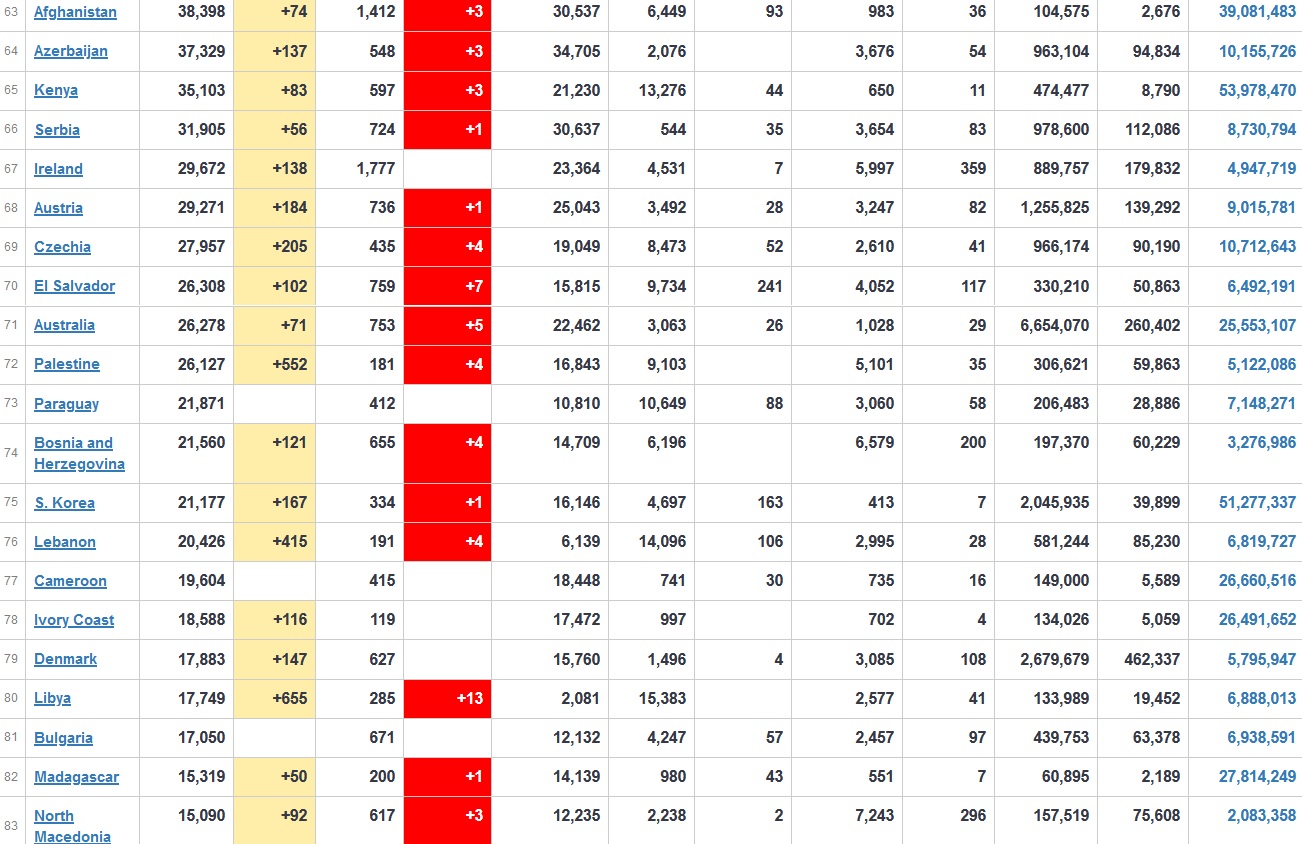
New Deaths :
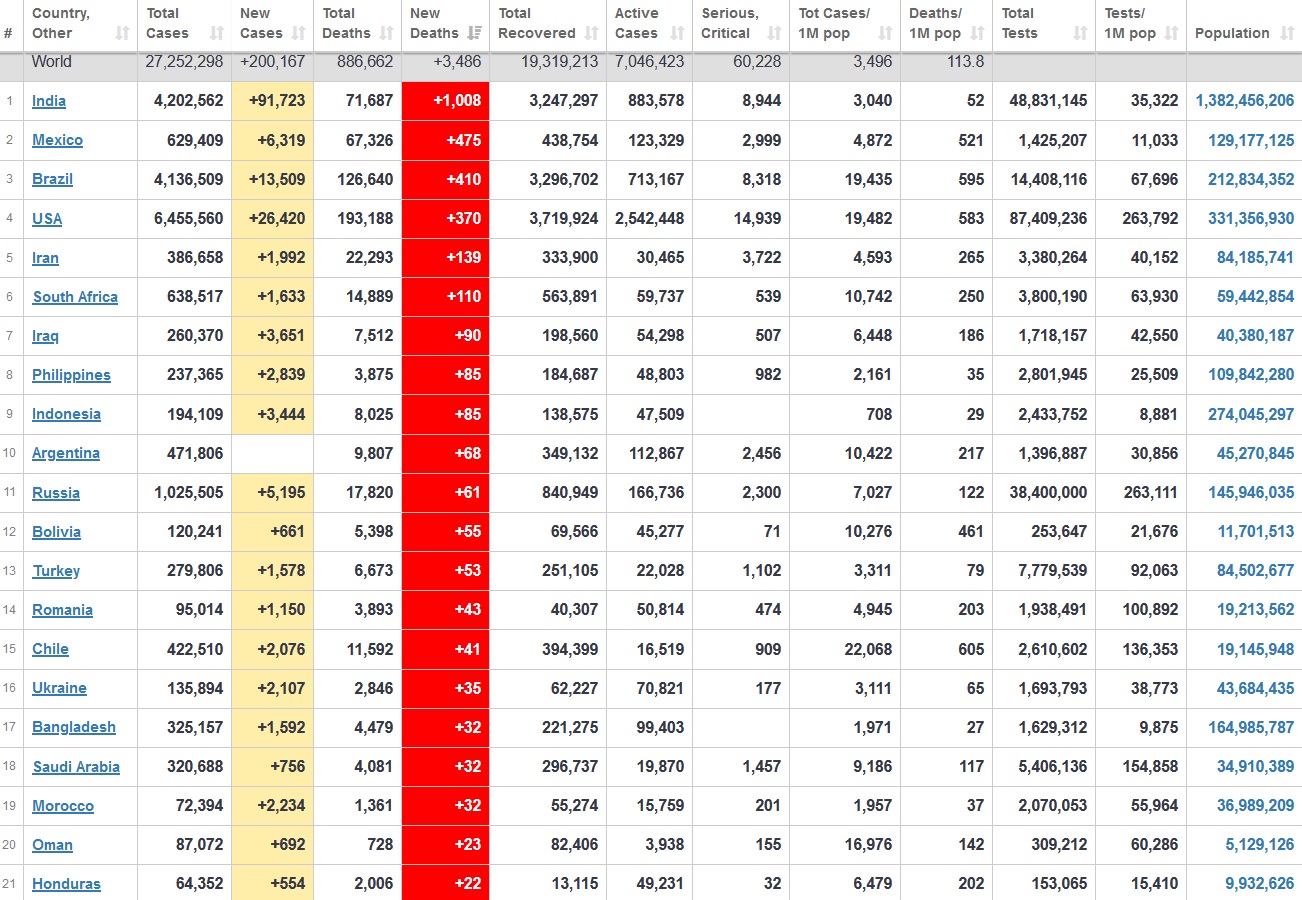
New Cases :
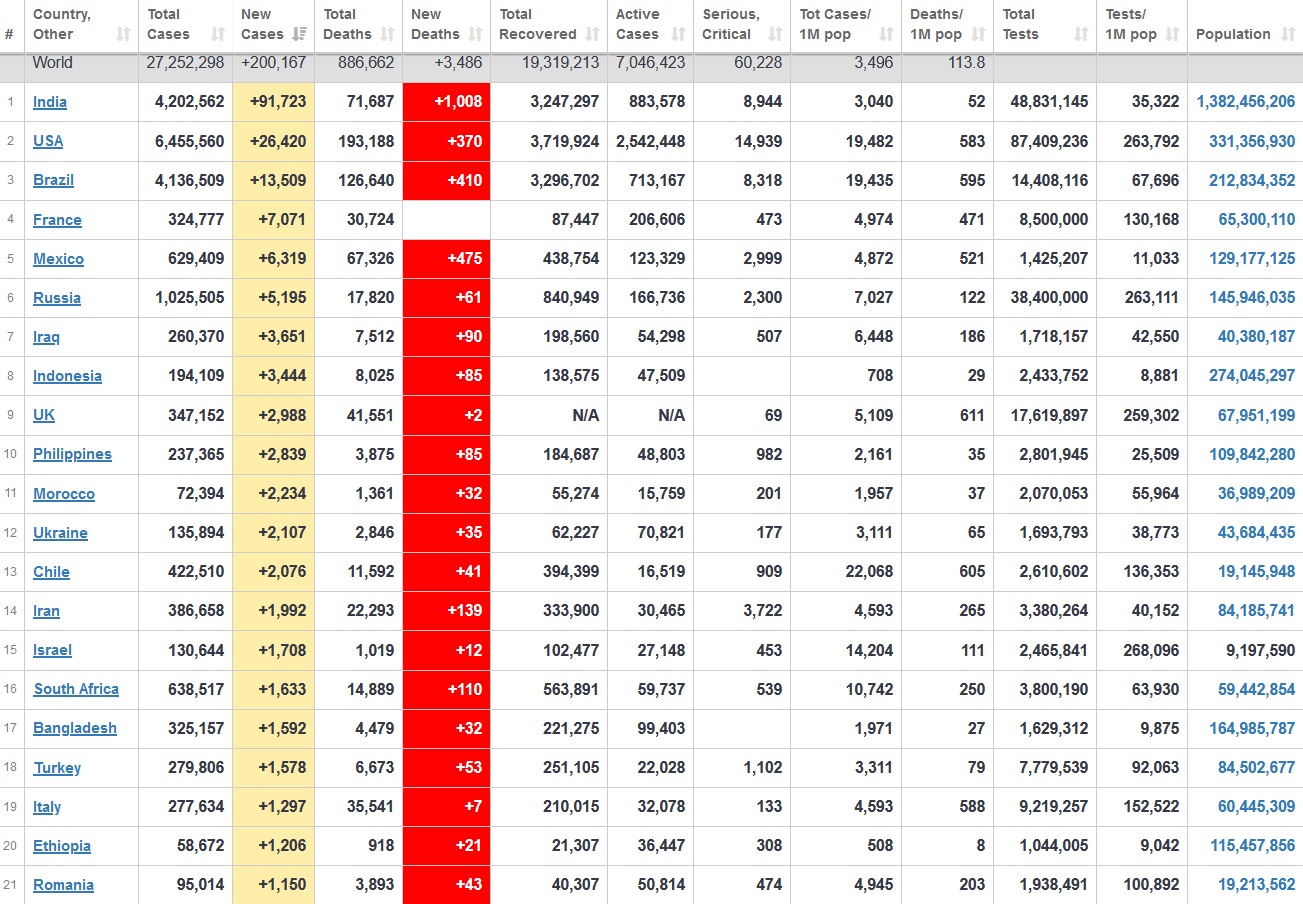
www.worldometers.info...




New Deaths :

New Cases :

www.worldometers.info...
Cor
onavirus: Nursing home death toll down by 1000
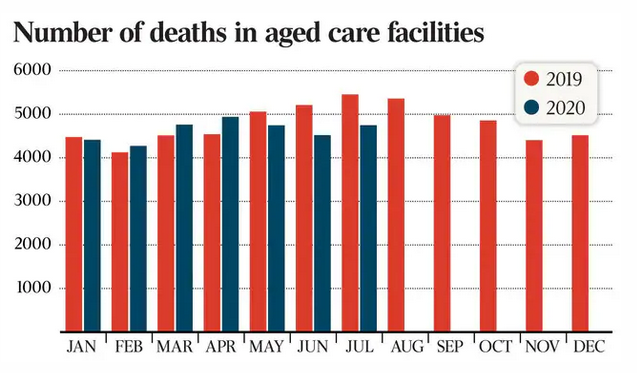

The number of deaths of nursing home residents has fallen by almost 1000 in the first seven months of 2020 compared with the year before, even taking into account those who have died this year from coronavirus.
Numbers Update for Europe, and Elsewhere (No BNO) :
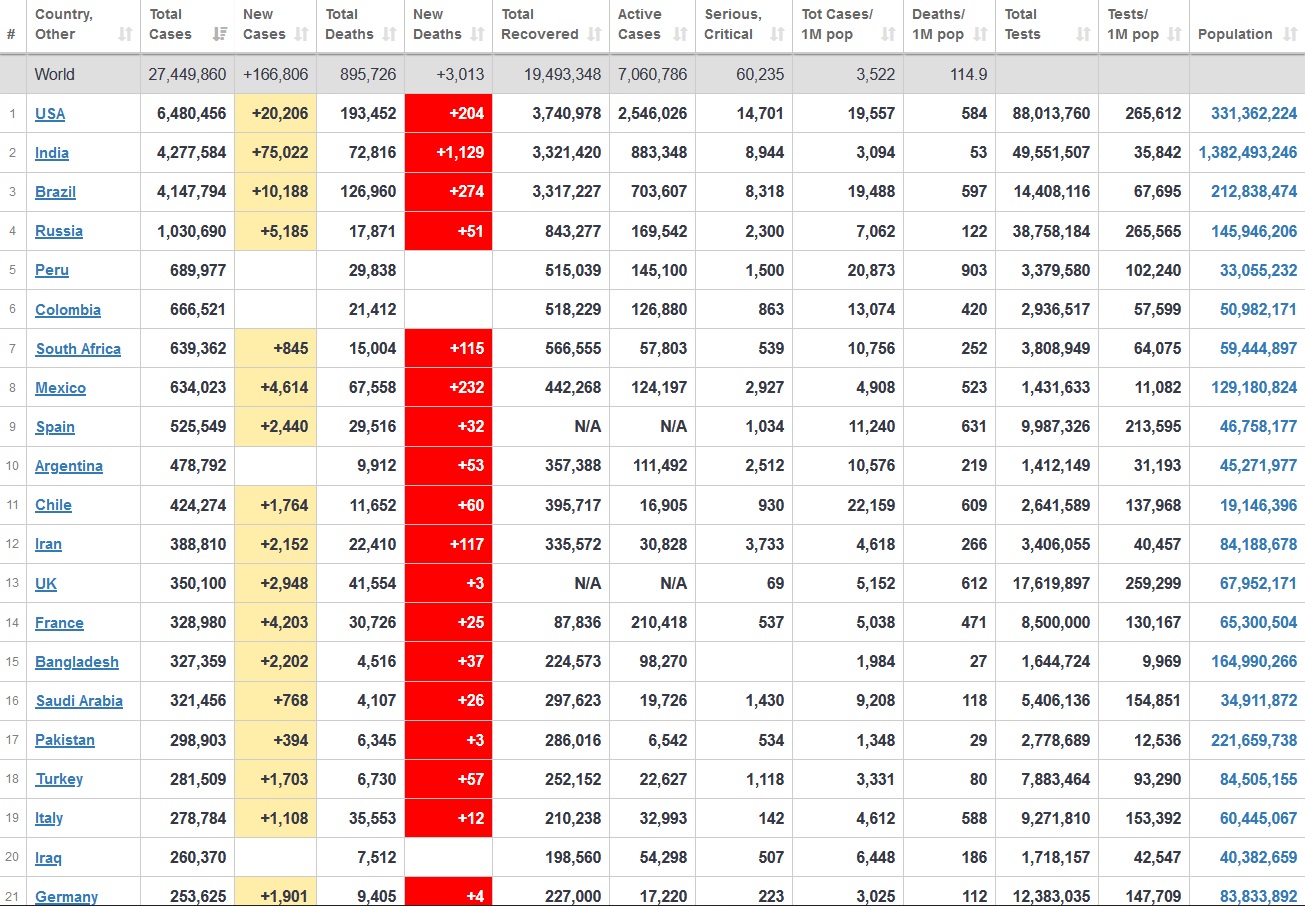
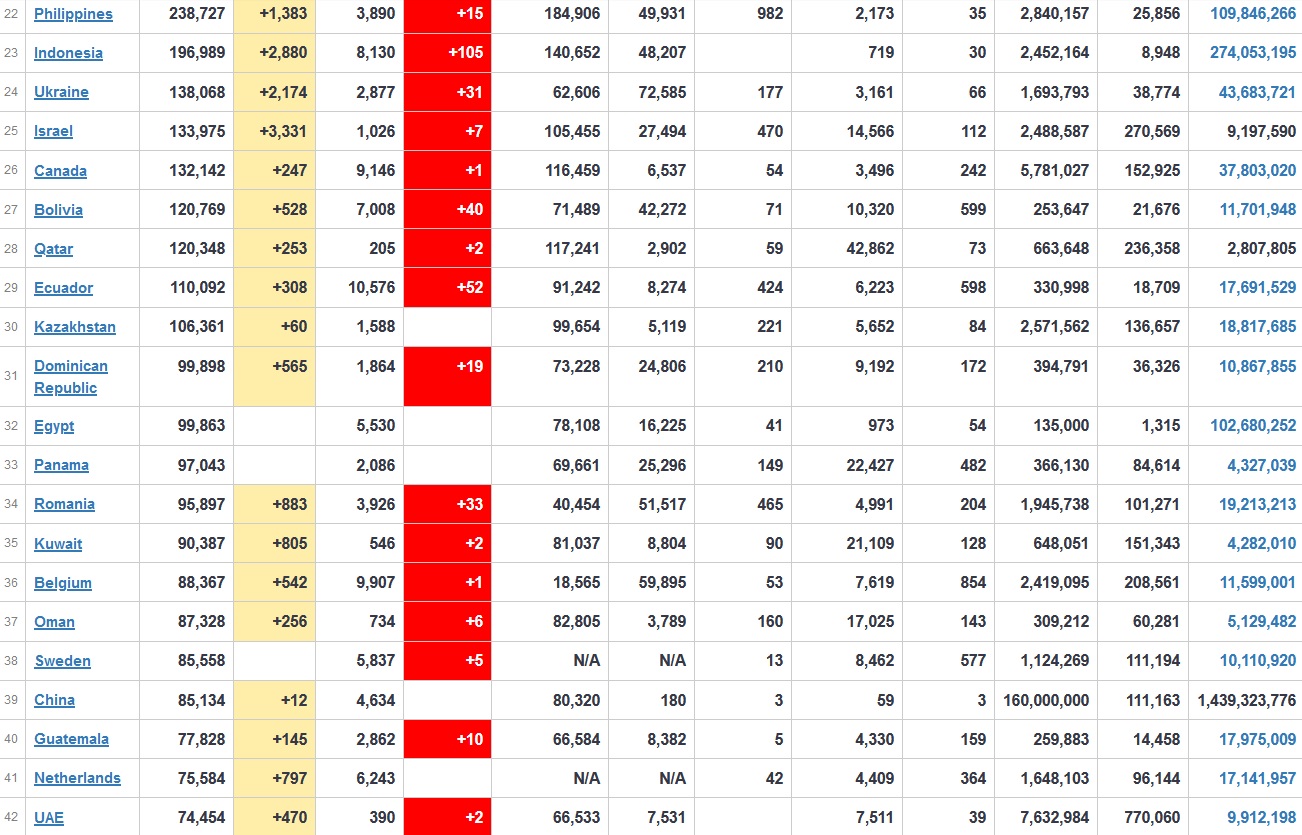
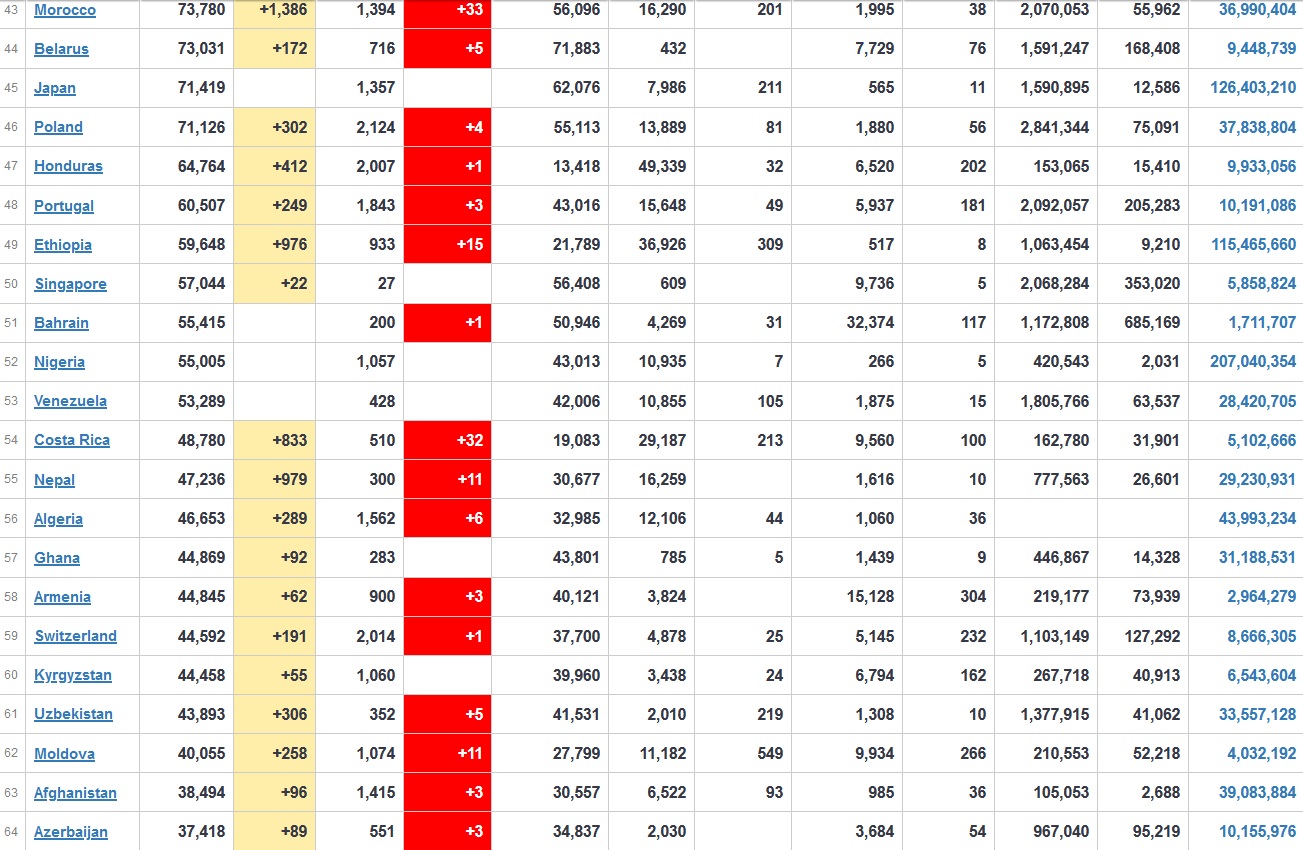
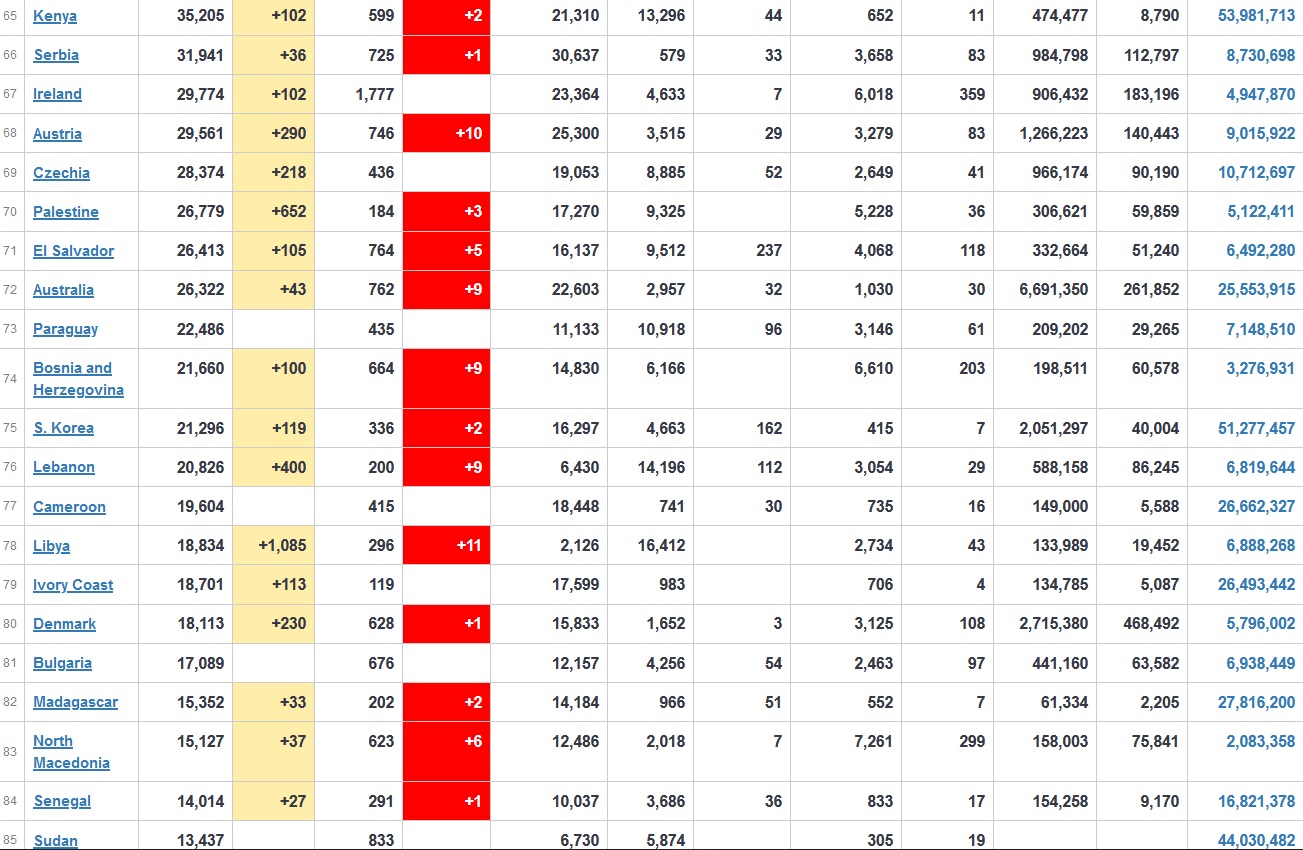
New Deaths :
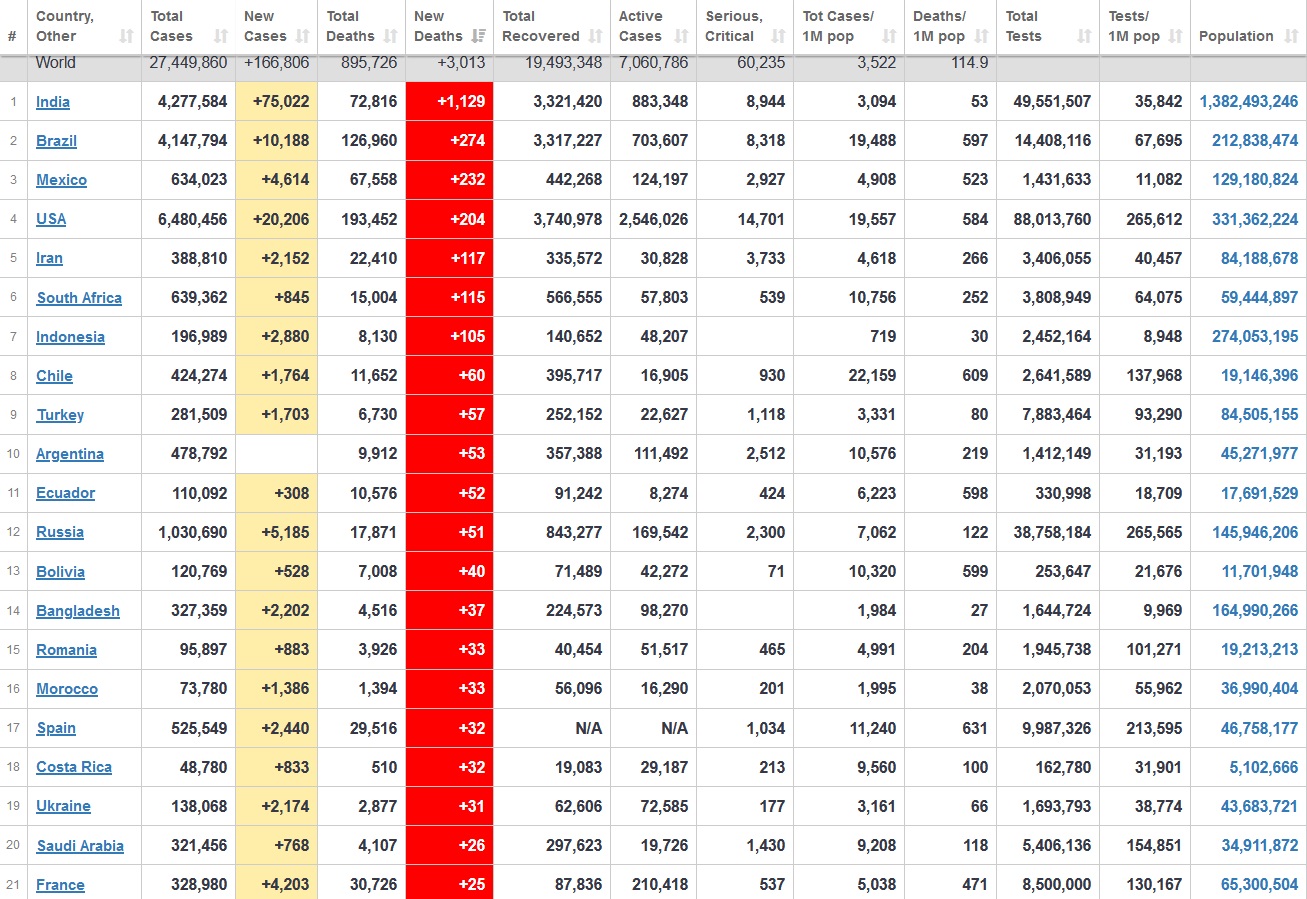
New Cases :
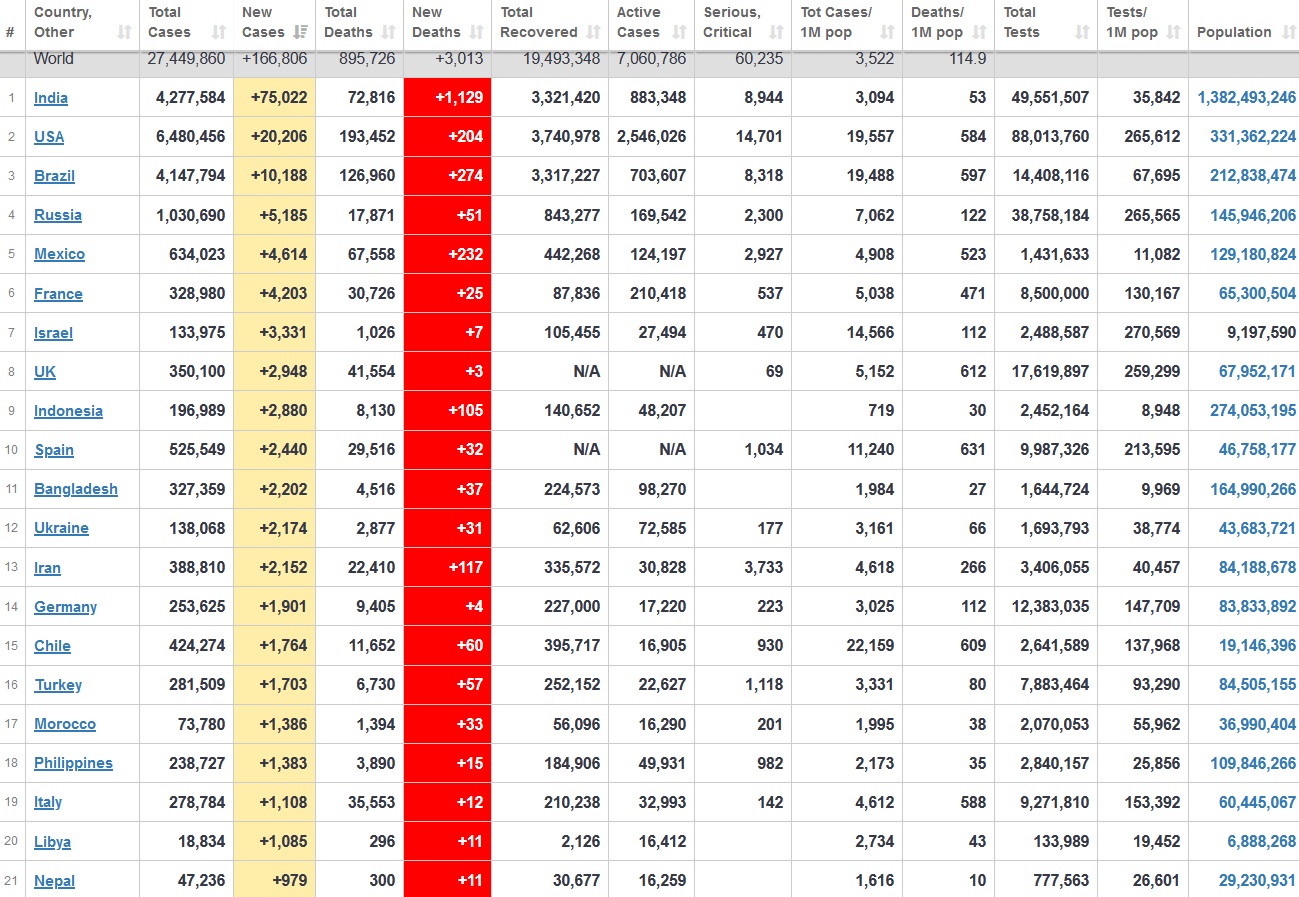
www.worldometers.info...




New Deaths :

New Cases :

www.worldometers.info...
Numbers Update for Europe, and Elsewhere (No BNO) :
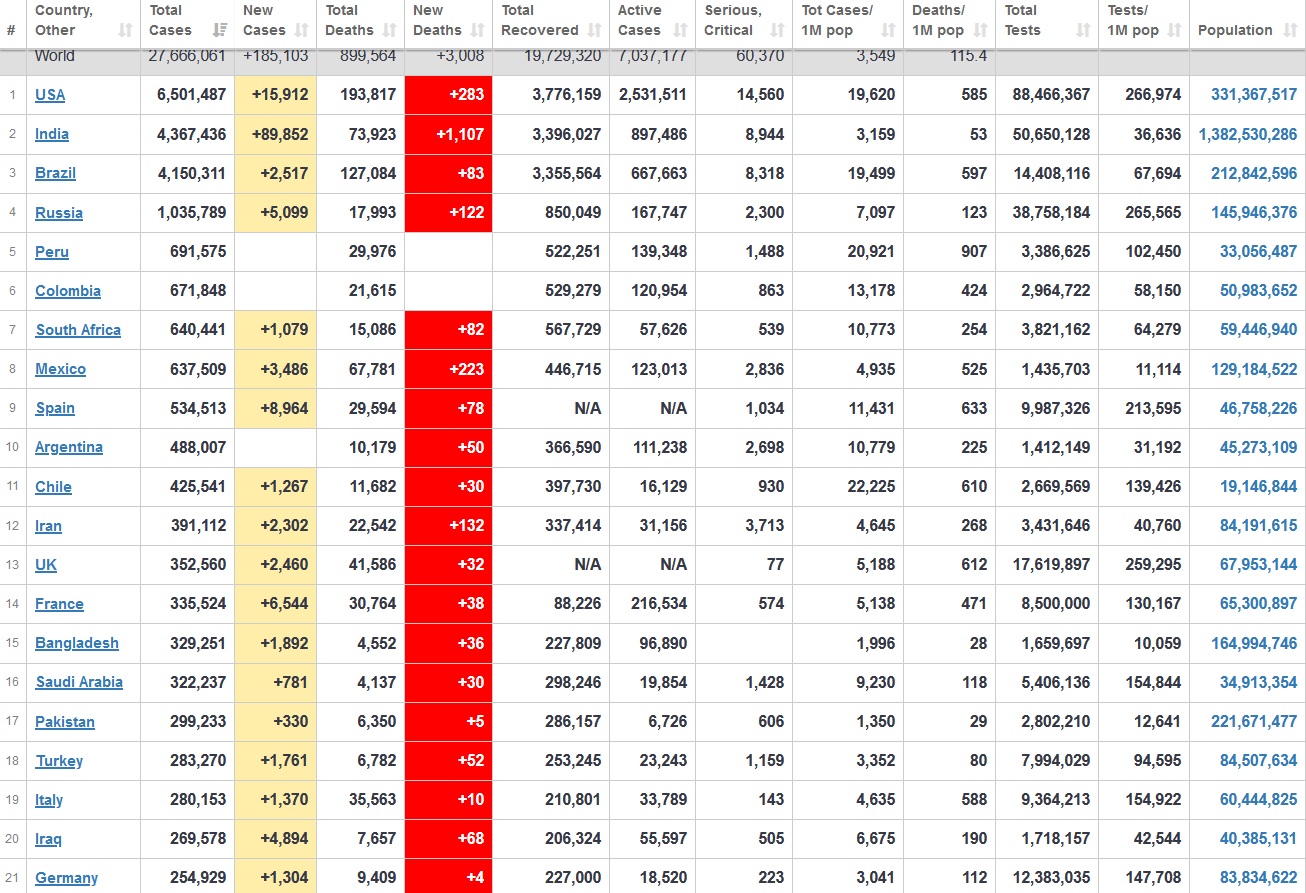
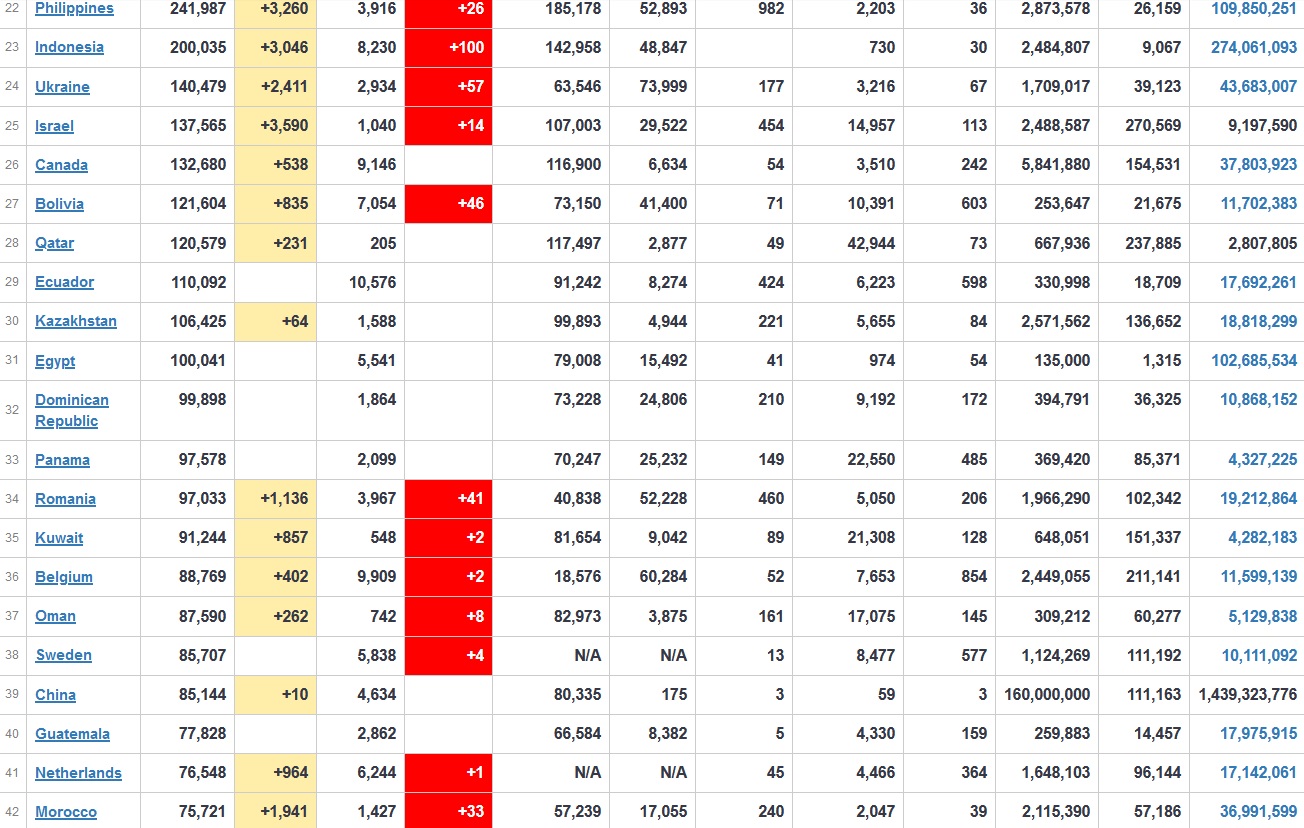
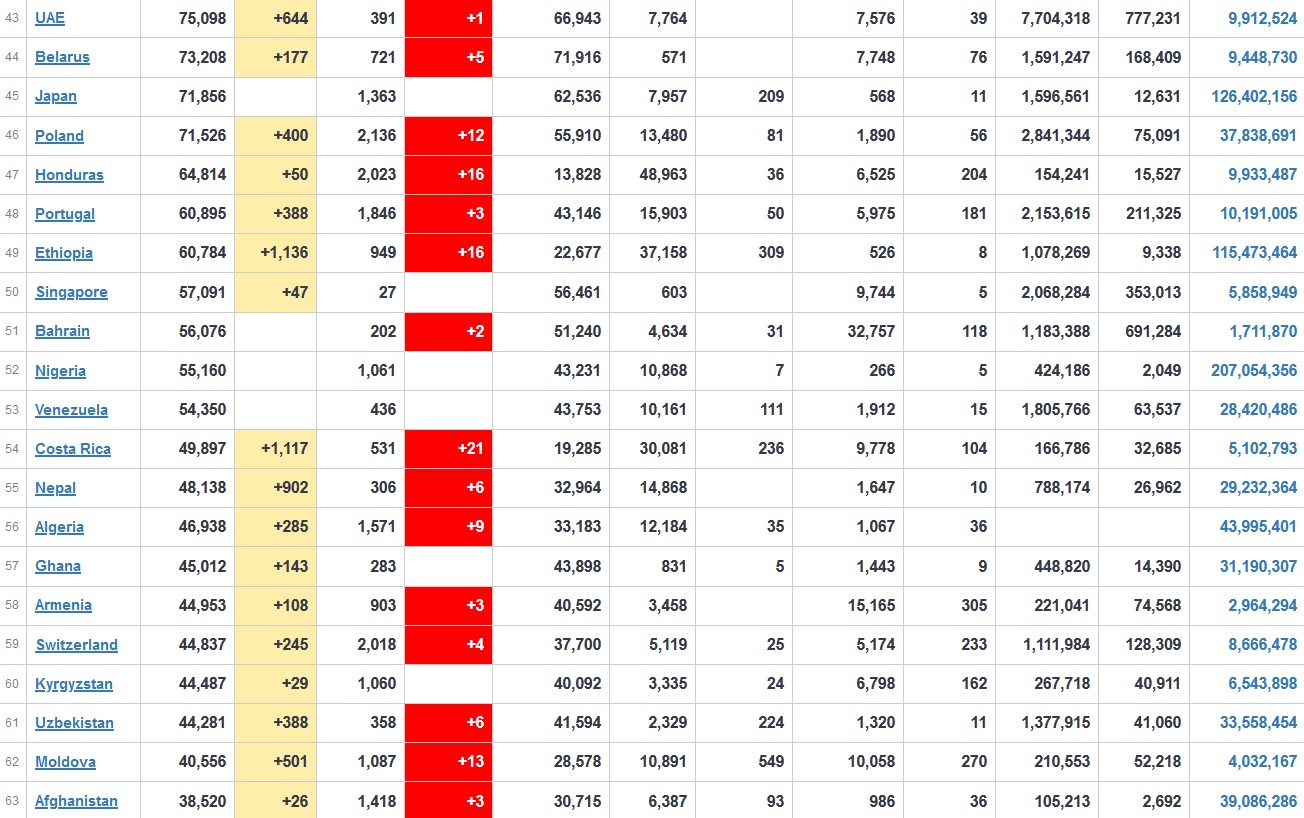
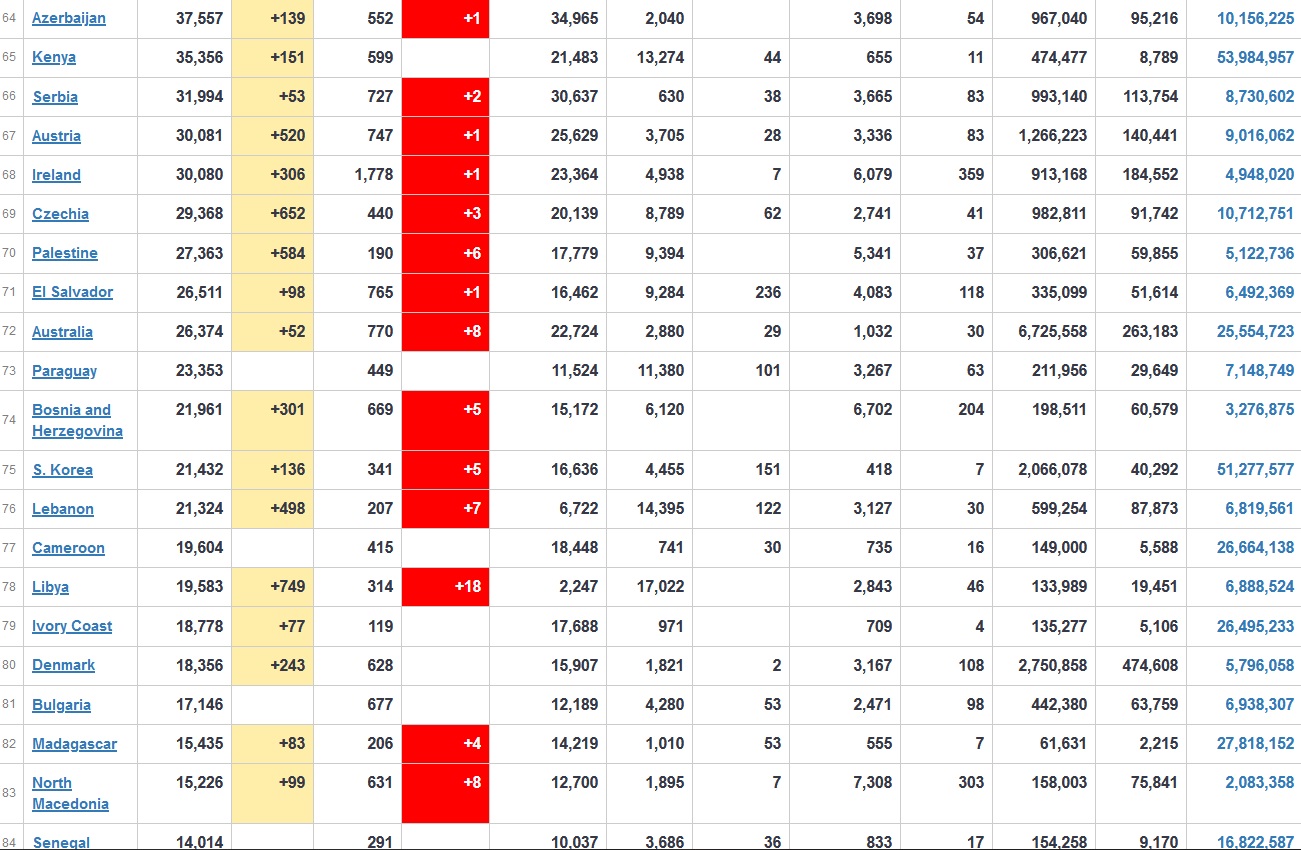
New Deaths :
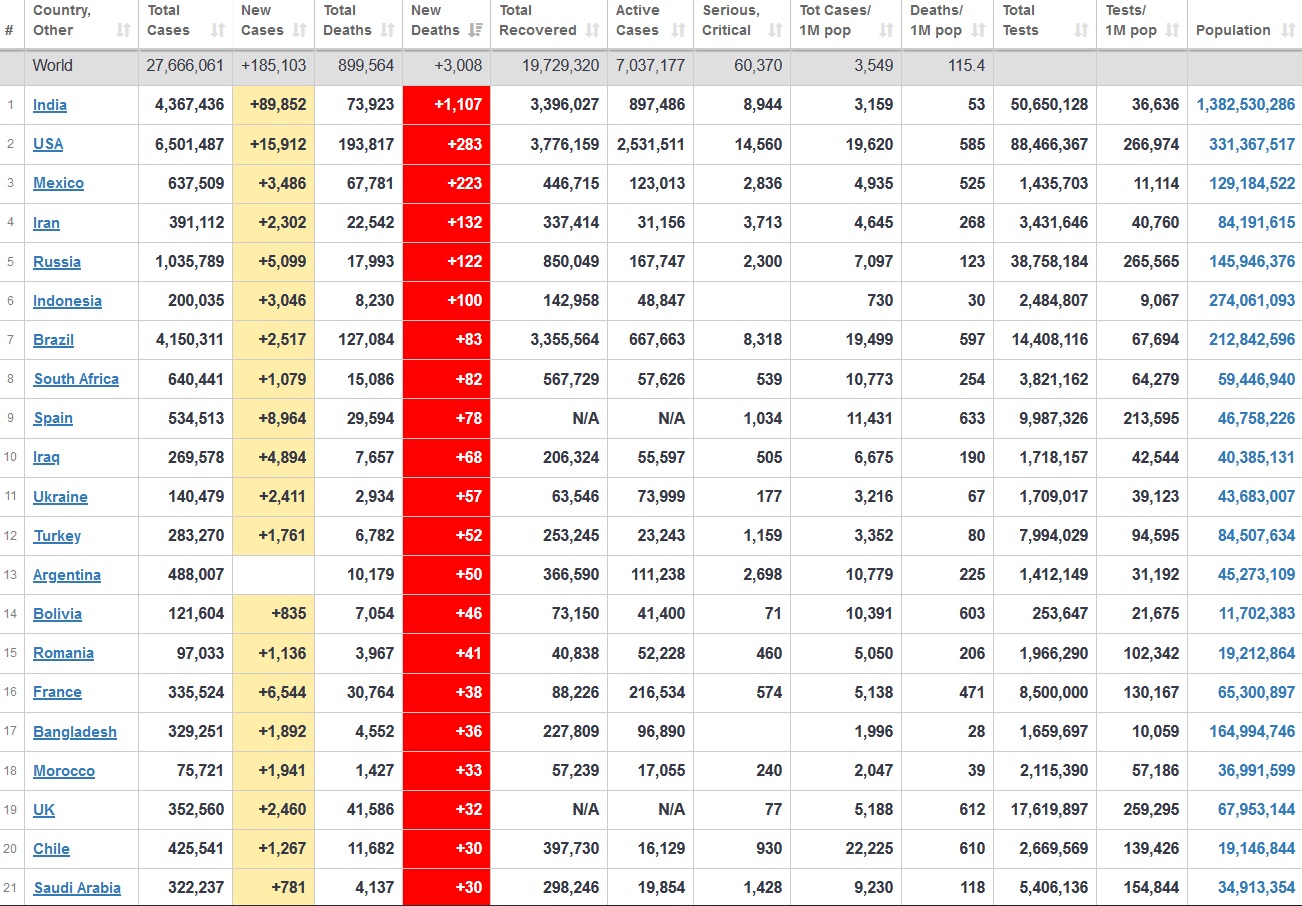
New Cases :
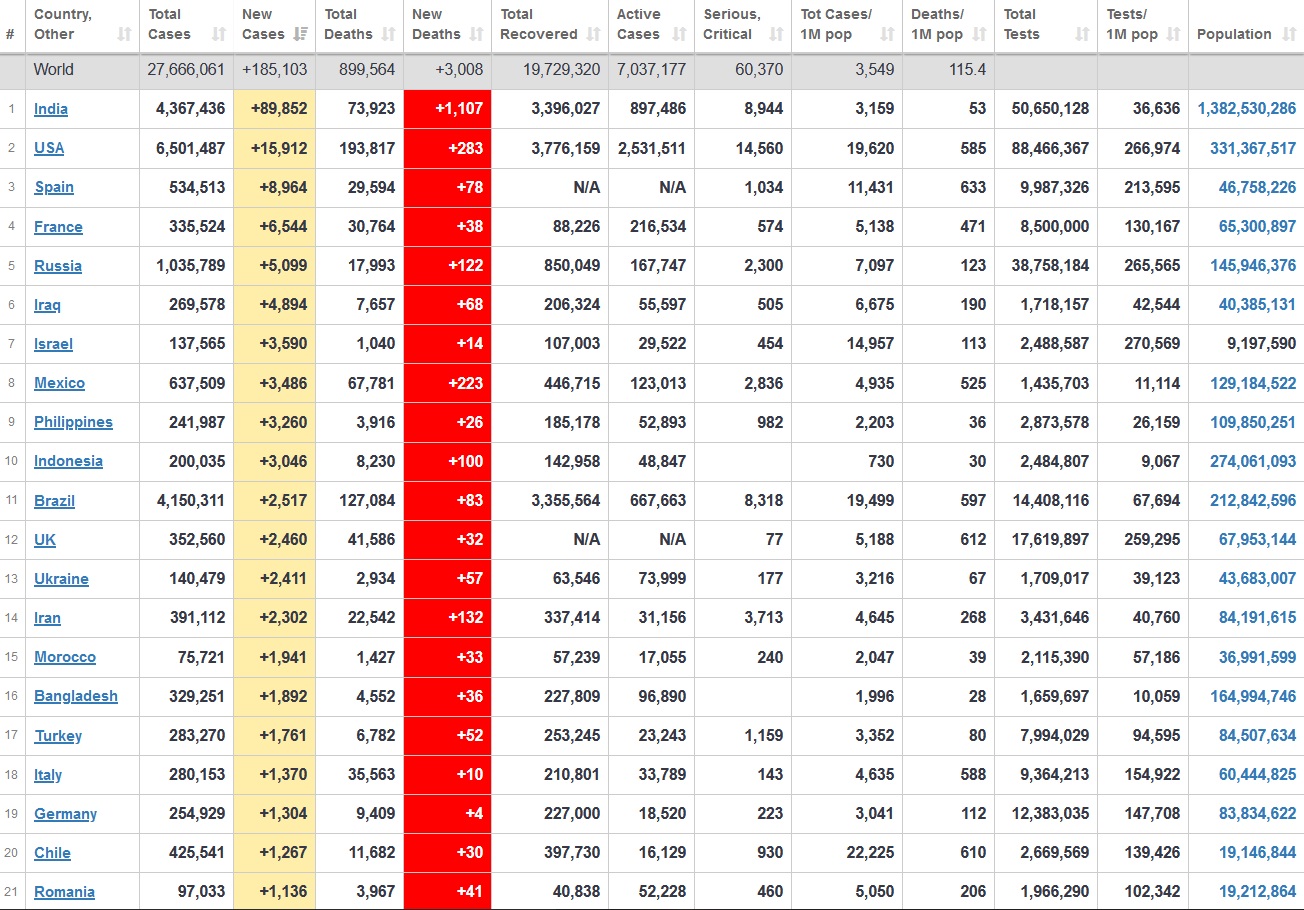
www.worldometers.info...




New Deaths :

New Cases :

www.worldometers.info...
new topics
-
Only two Navy destroyers currently operational as fleet size hits record low
Military Projects: 2 hours ago -
George Stephanopoulos and ABC agree to pay $15 million to settle Trump defamation suit
Mainstream News: 7 hours ago
top topics
-
George Stephanopoulos and ABC agree to pay $15 million to settle Trump defamation suit
Mainstream News: 7 hours ago, 16 flags -
Light from Space Might Be Travelling Instantaneously
Space Exploration: 15 hours ago, 9 flags -
The MSM has the United Healthcare assassin all wrong.
General Conspiracies: 16 hours ago, 8 flags -
More Bad News for Labour and Rachel Reeves Stole Christmas from Working Families
Regional Politics: 13 hours ago, 8 flags -
2025 Bingo Card
The Gray Area: 16 hours ago, 7 flags -
Only two Navy destroyers currently operational as fleet size hits record low
Military Projects: 2 hours ago, 6 flags
active topics
-
The Mystery Drones and Government Lies
Political Conspiracies • 70 • : WeMustCare -
-@TH3WH17ERABB17- -Q- ---TIME TO SHOW THE WORLD--- -Part- --44--
Dissecting Disinformation • 3683 • : duncanagain -
One out of every 20 Canadians Dies by Euthanasia
Medical Issues & Conspiracies • 23 • : Daughter2v2 -
Former DNI-Congressman John Ratcliffe says the U.S. Government is Intimidated by UFOs.
Aliens and UFOs • 39 • : WeMustCare -
Drones everywhere in New Jersey
Aliens and UFOs • 165 • : Zaphod58 -
Mass UAP events. DC. Machester Airport, UFOs over sub base in CT, Nuke bases.
Aliens and UFOs • 57 • : WeMustCare -
FBI Director CHRISTOPHER WRAY Will Resign Before President Trump Takes Office on 1.20.2025.
US Political Madness • 26 • : WeMustCare -
George Stephanopoulos and ABC agree to pay $15 million to settle Trump defamation suit
Mainstream News • 10 • : WeMustCare -
President-Elect DONALD TRUMP's 2nd-Term Administration Takes Shape.
Political Ideology • 330 • : WeMustCare -
Light from Space Might Be Travelling Instantaneously
Space Exploration • 24 • : norhoc4

